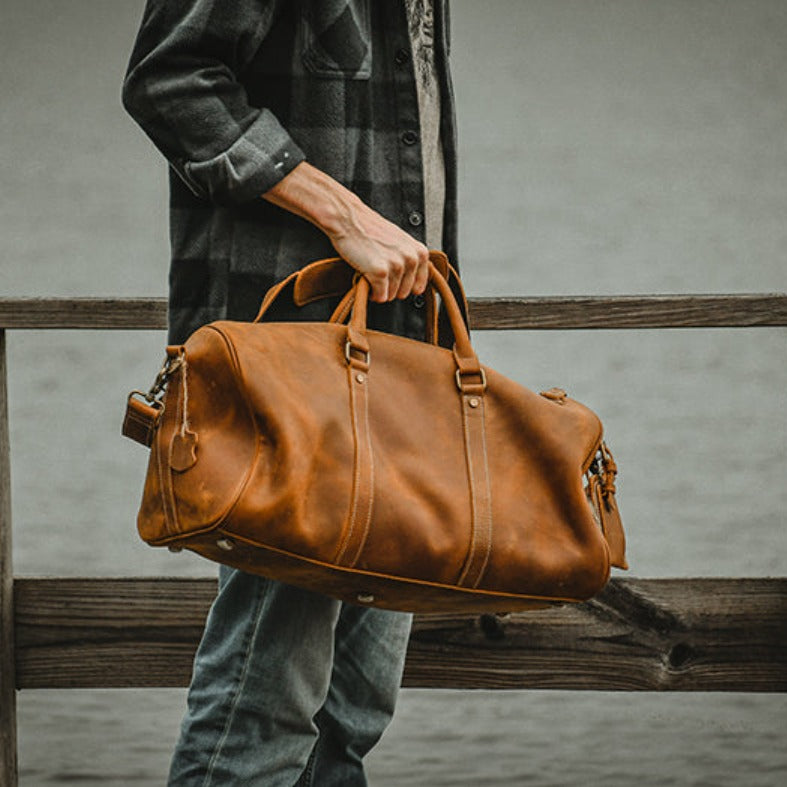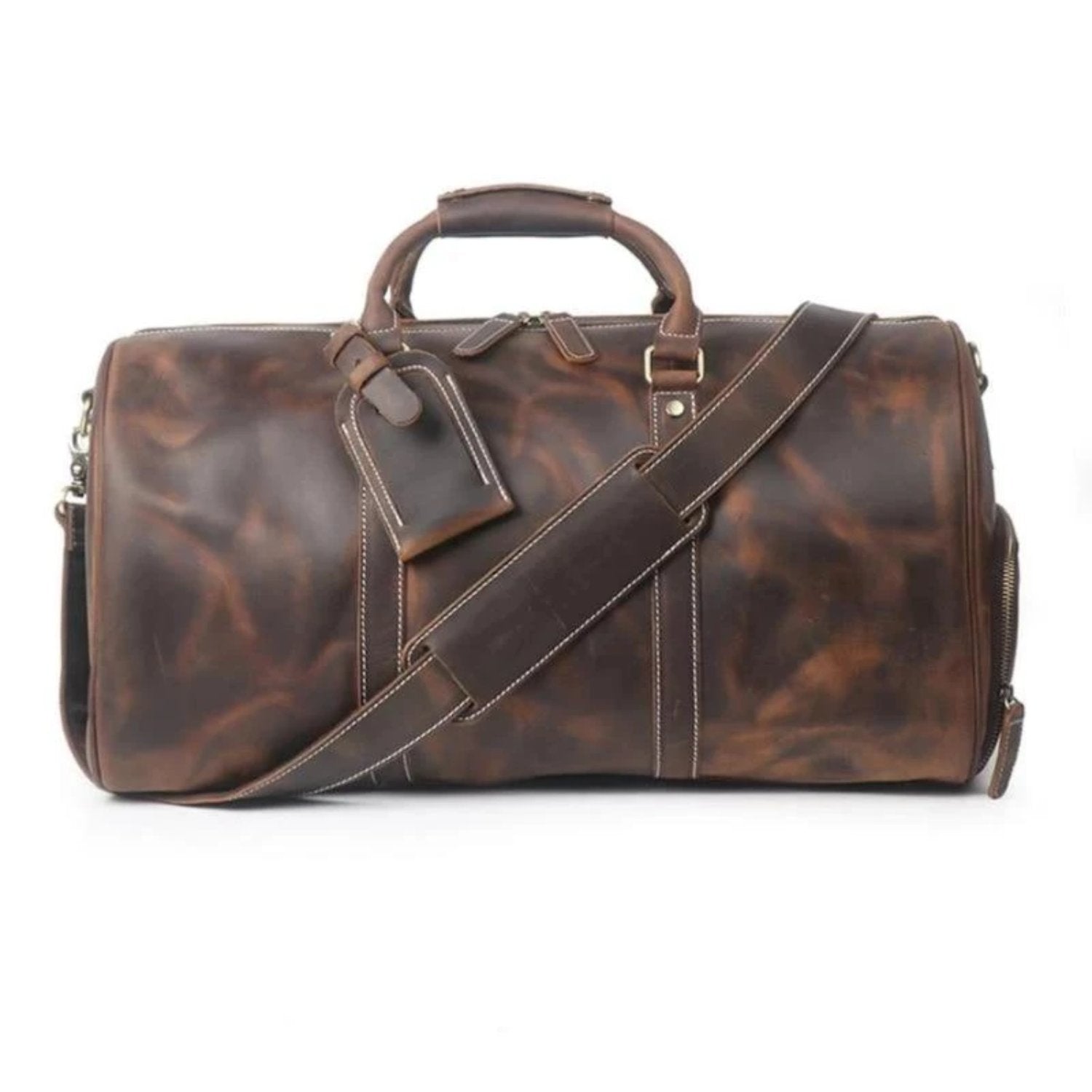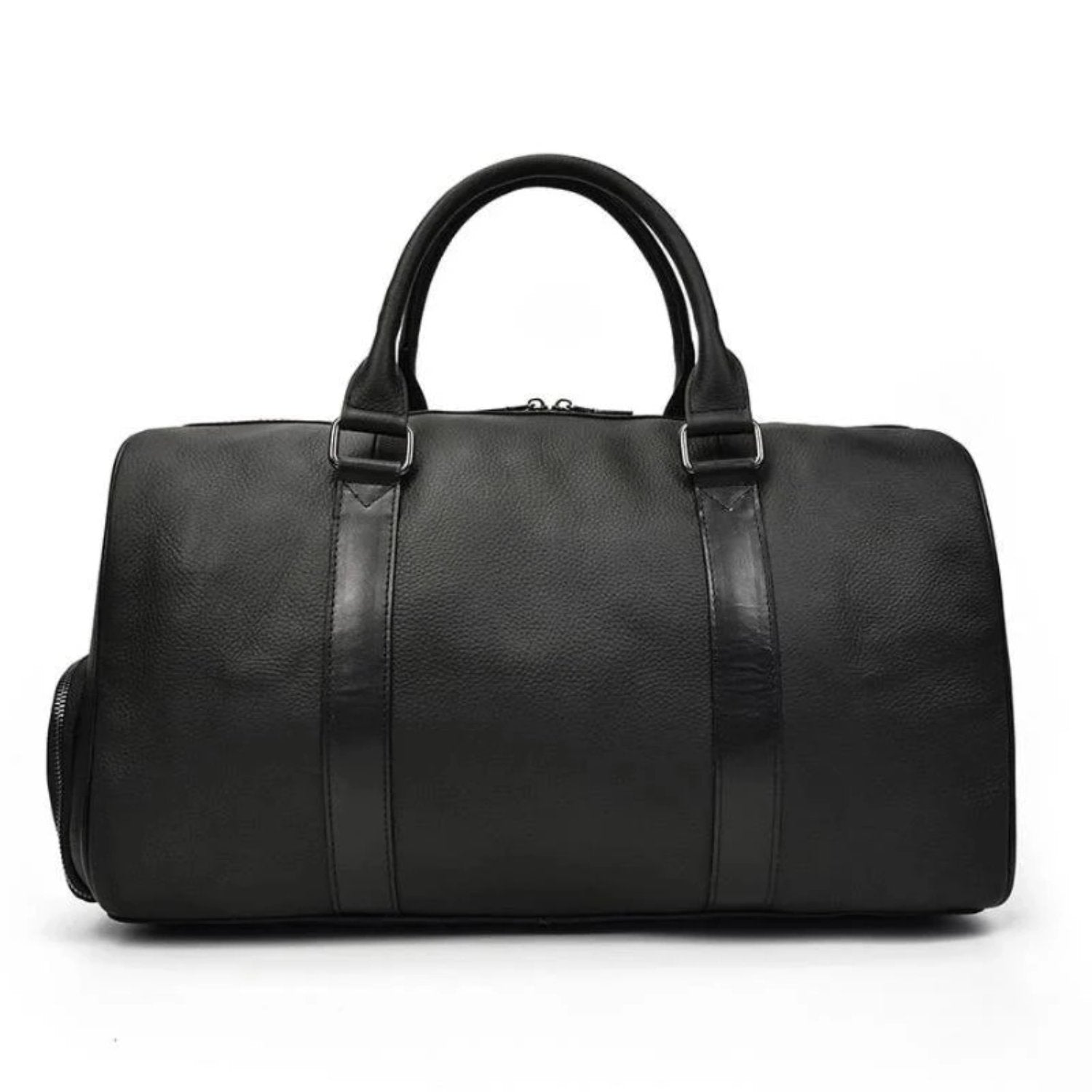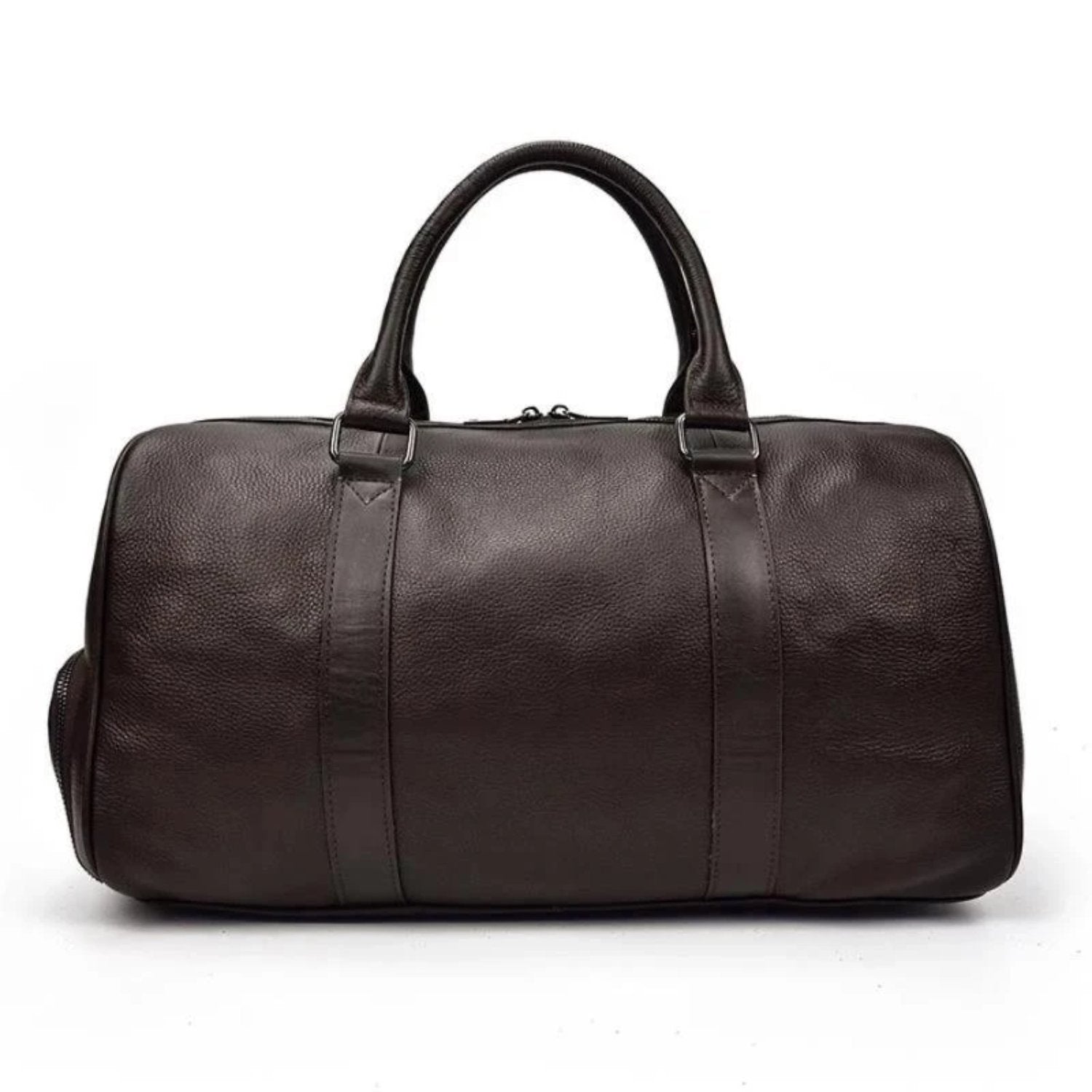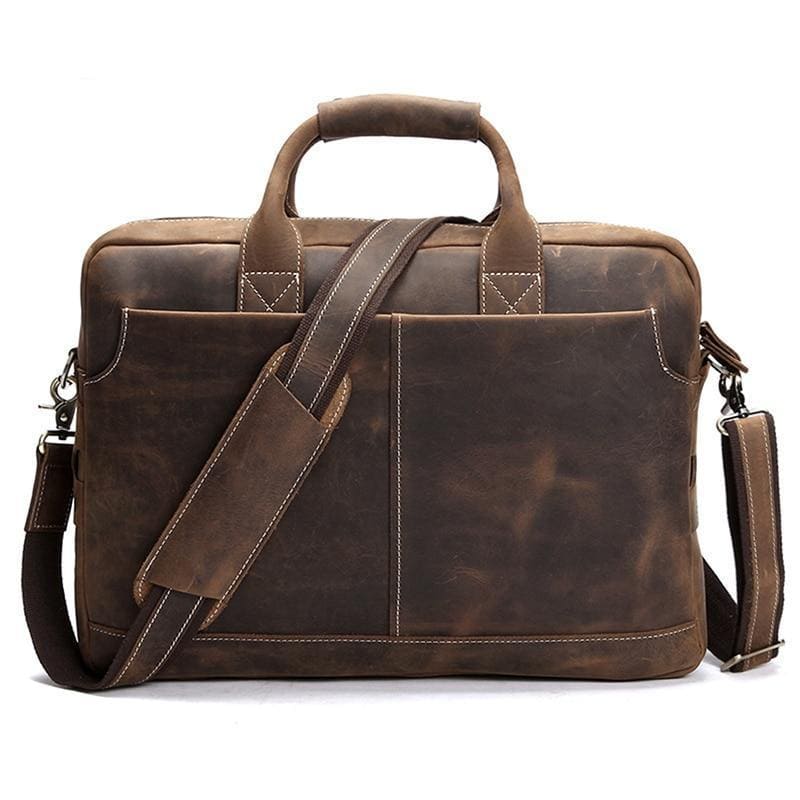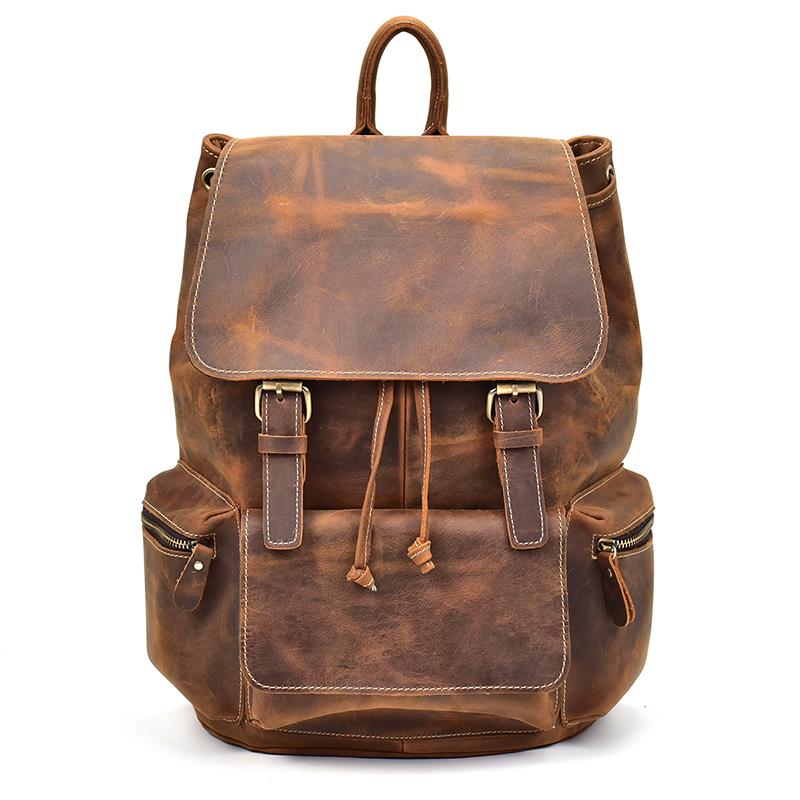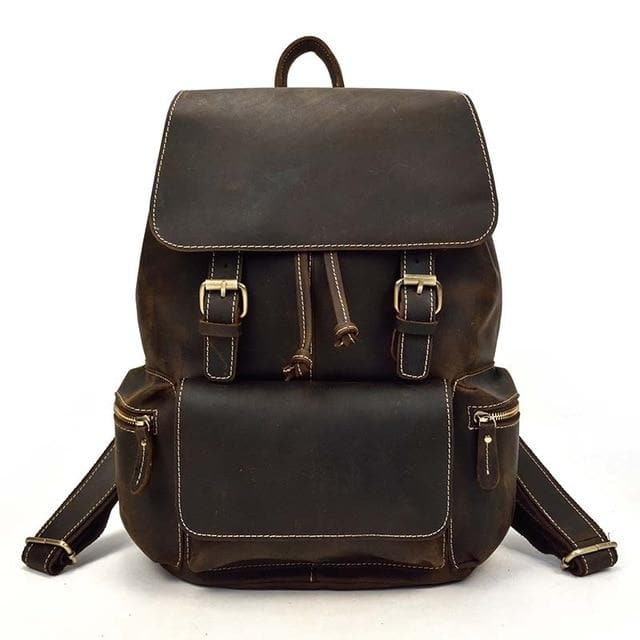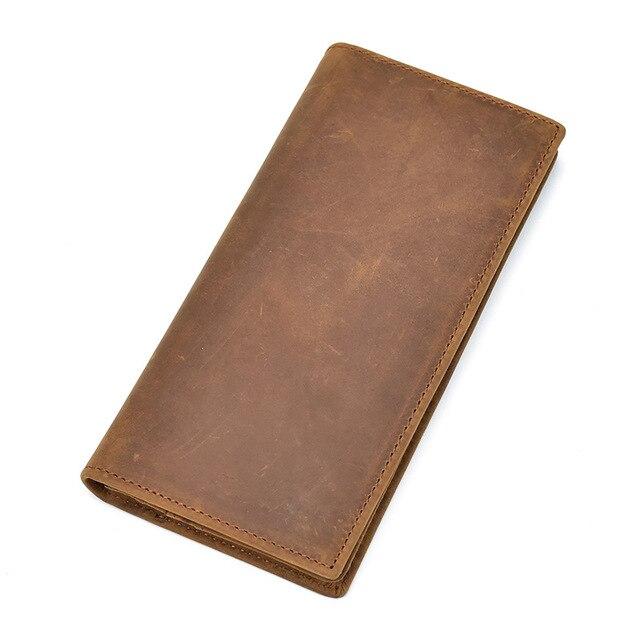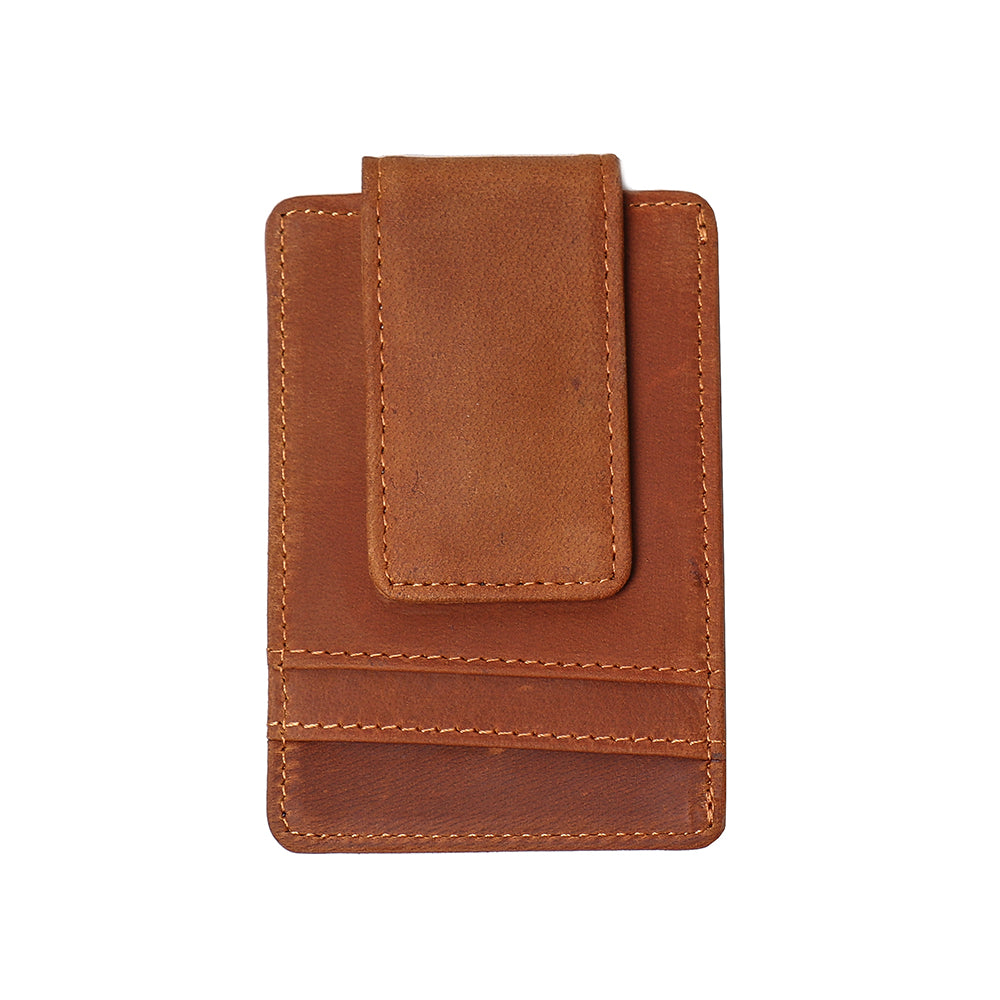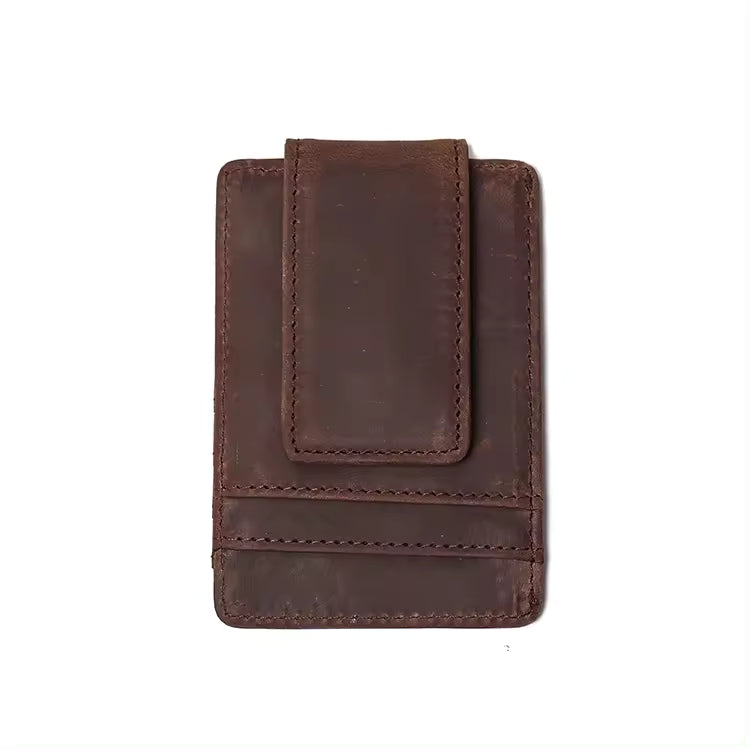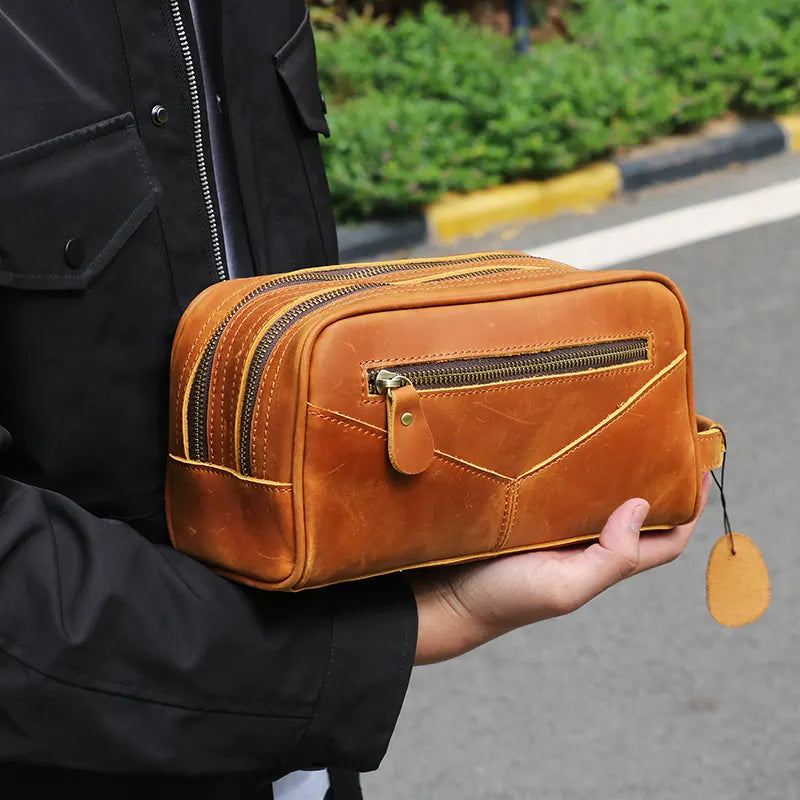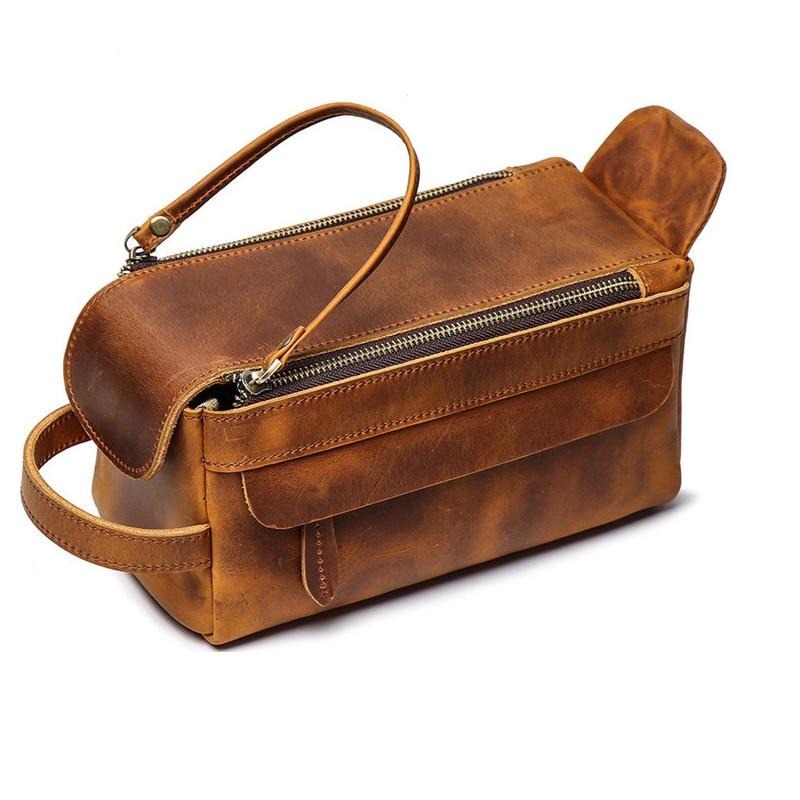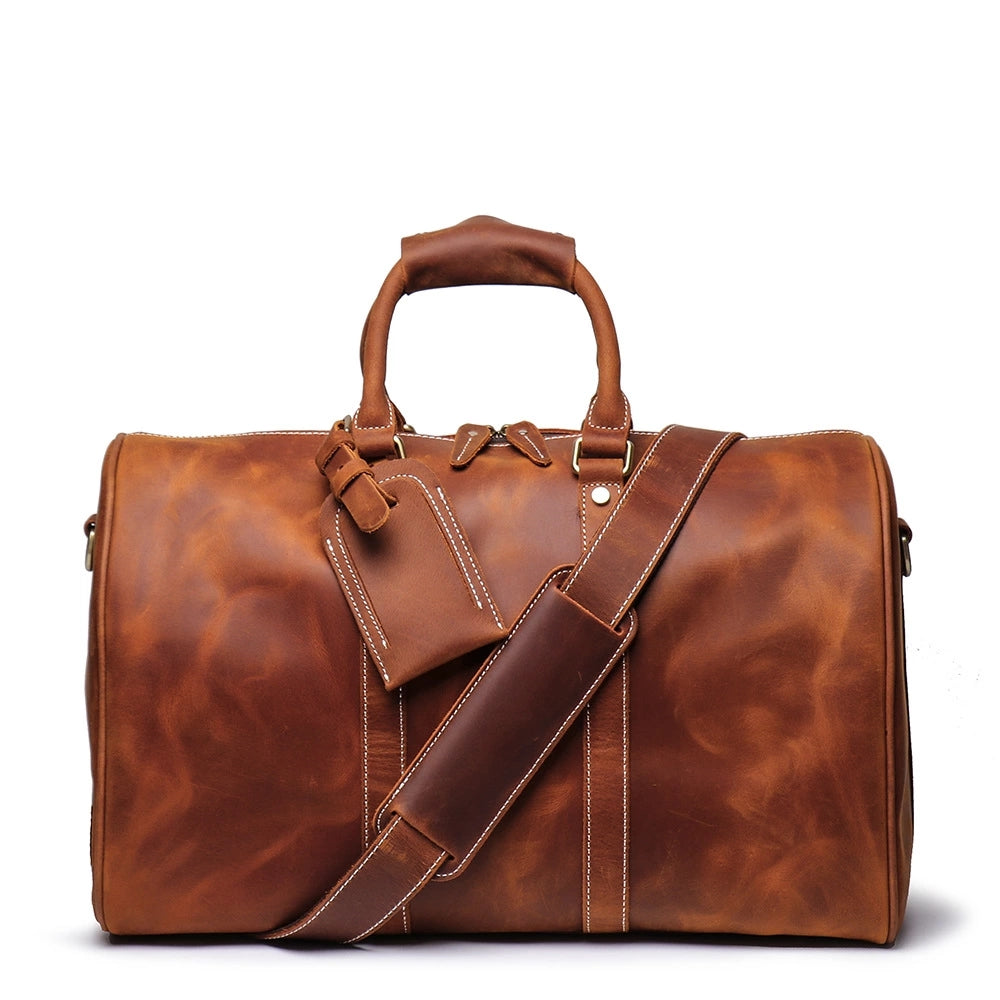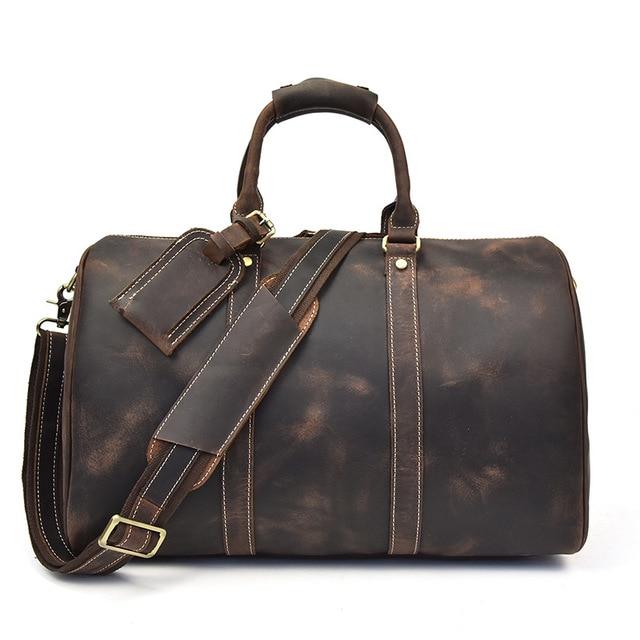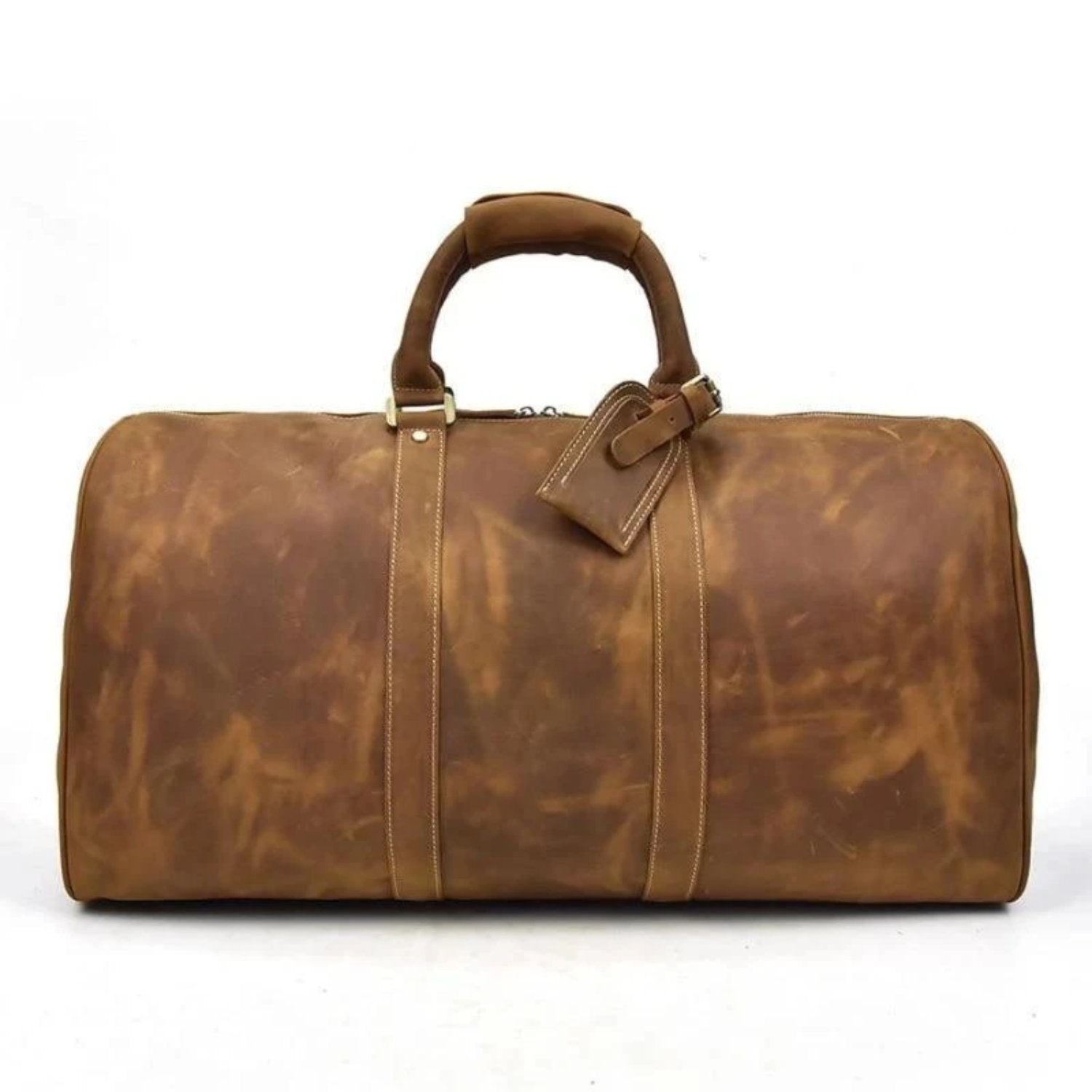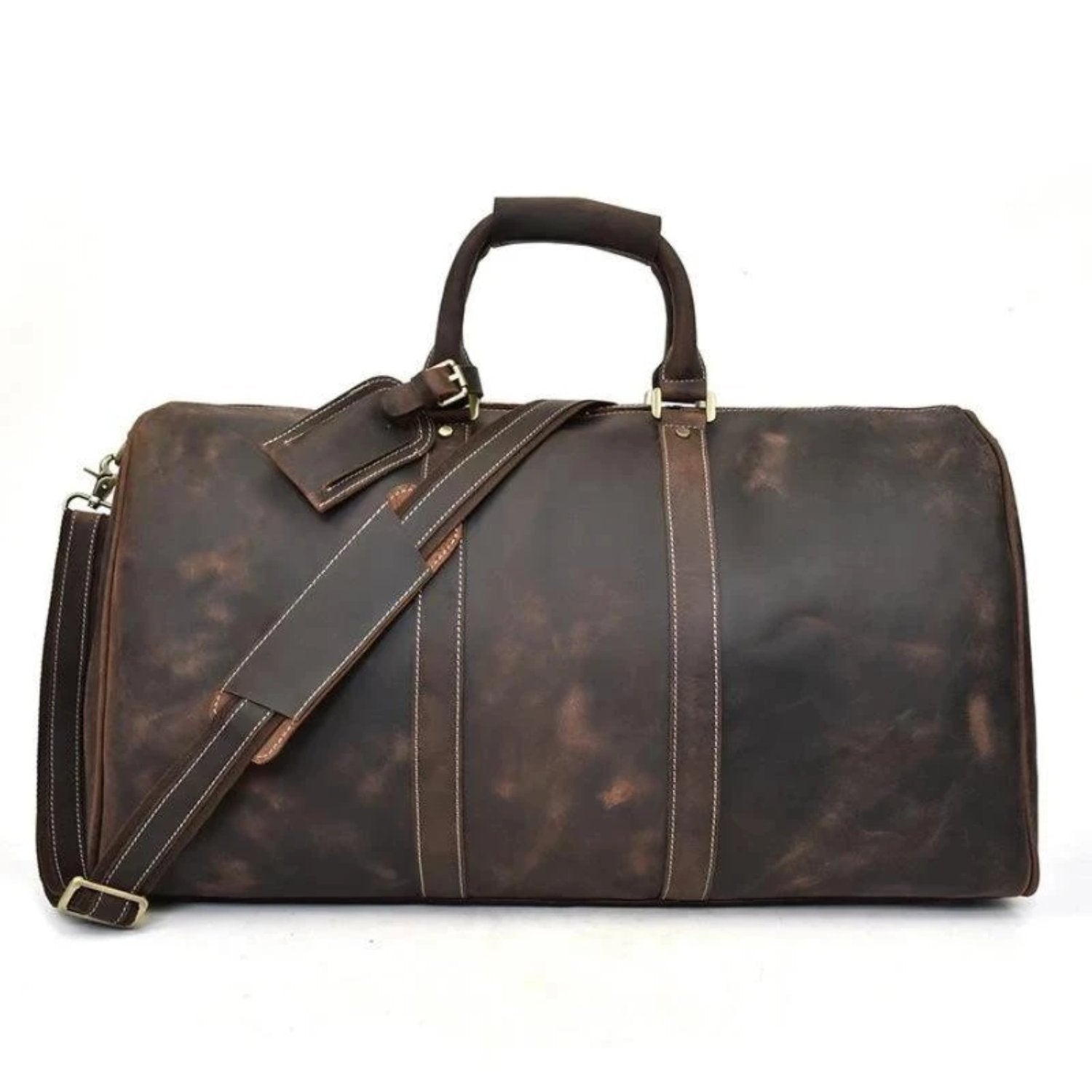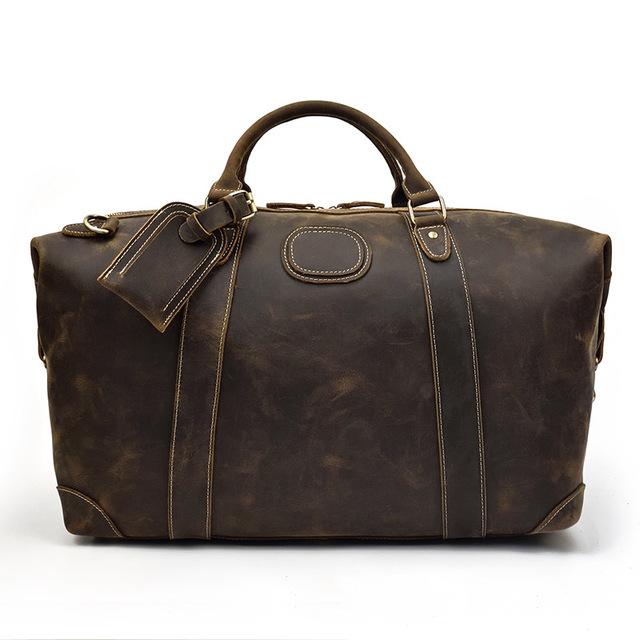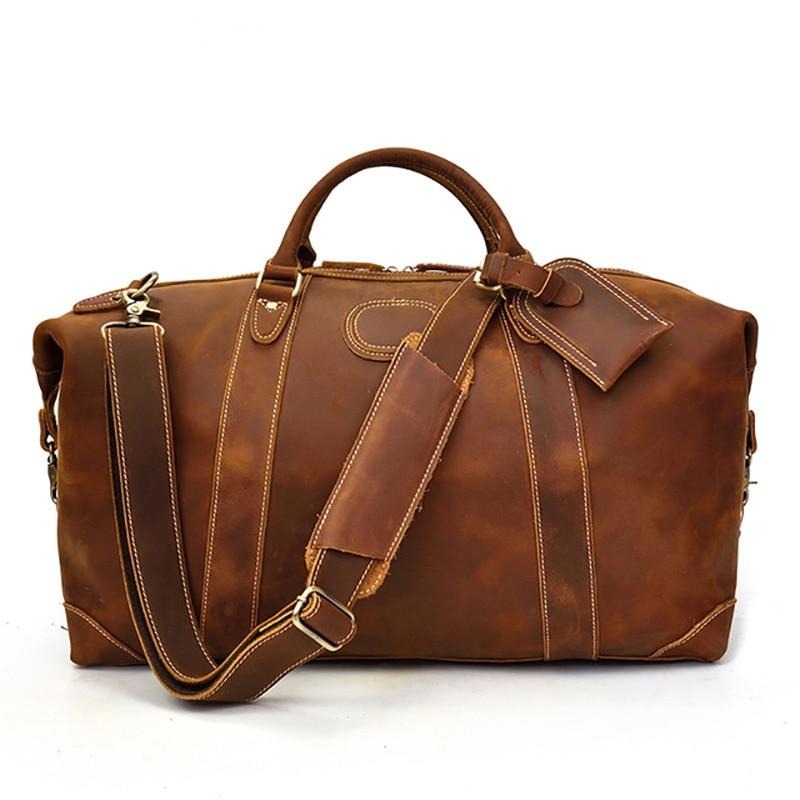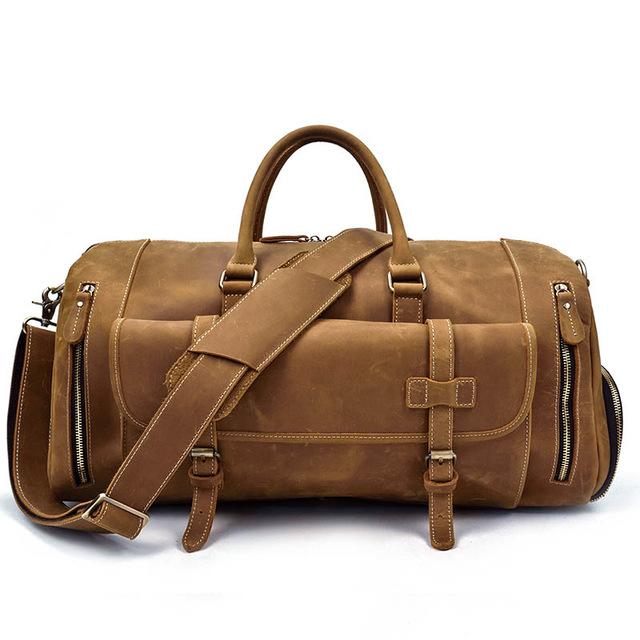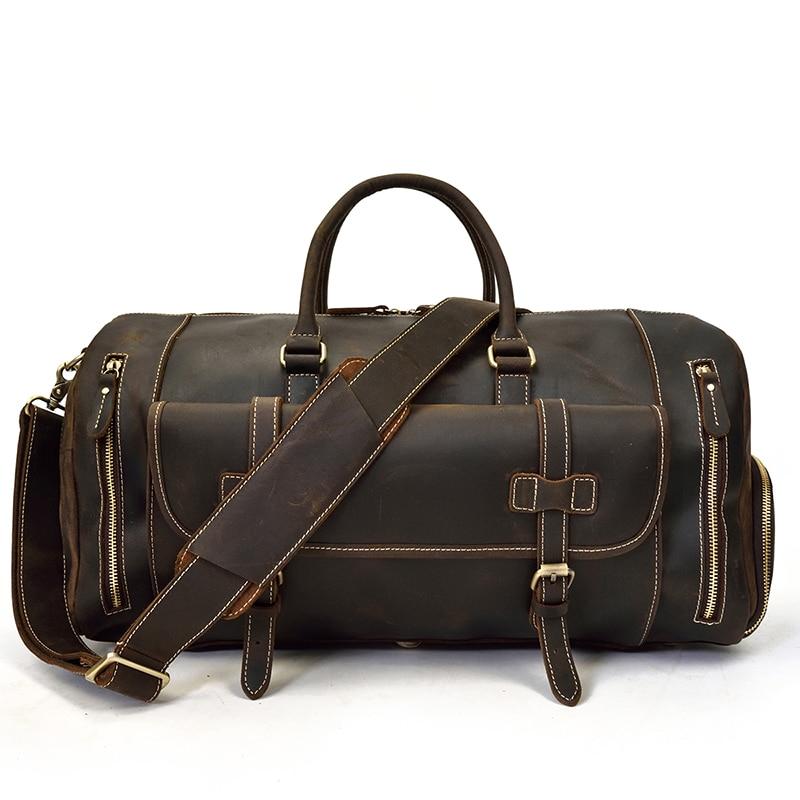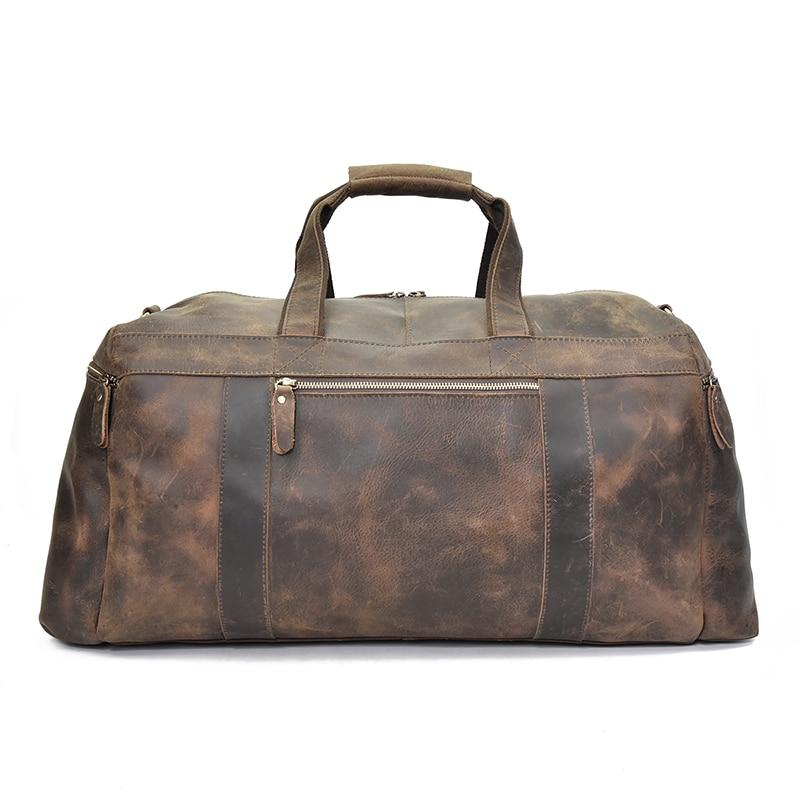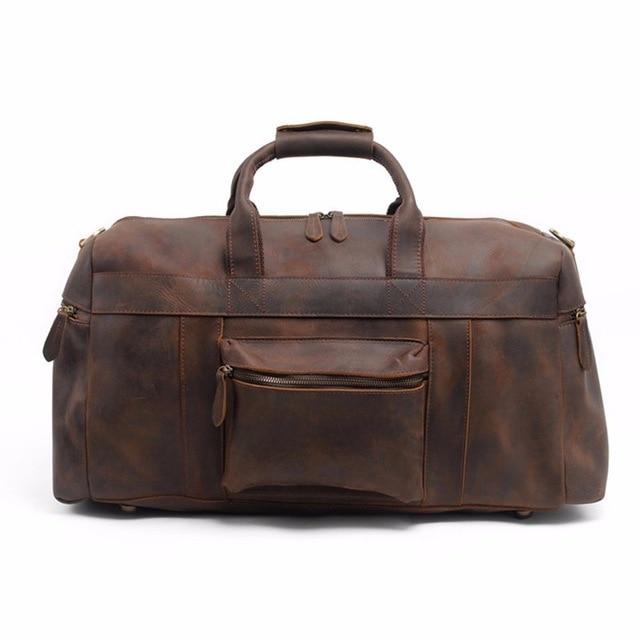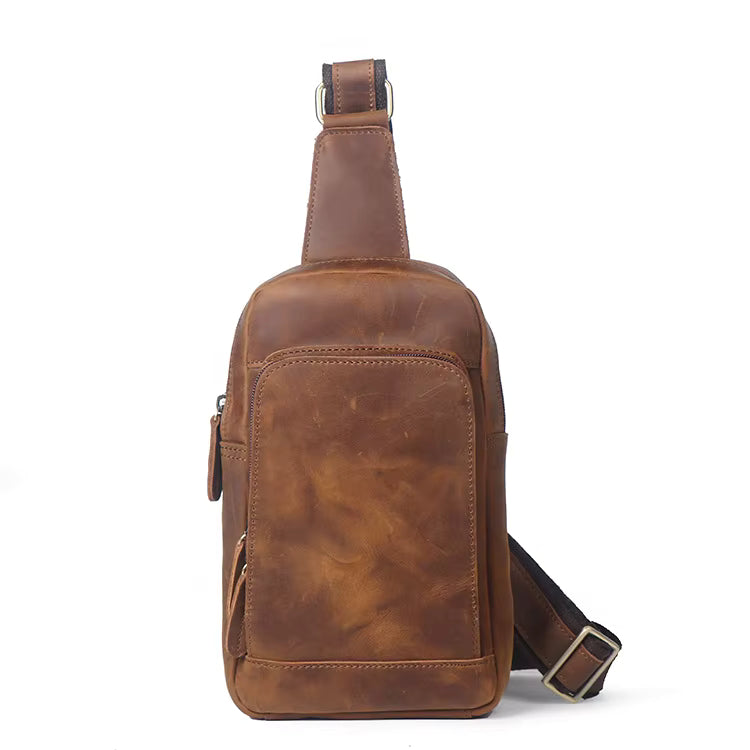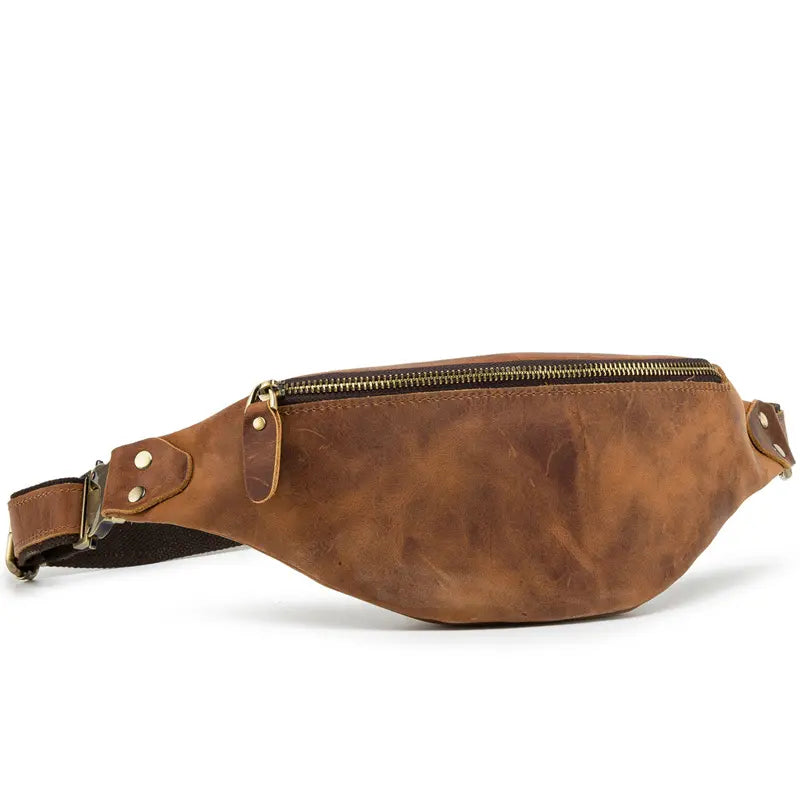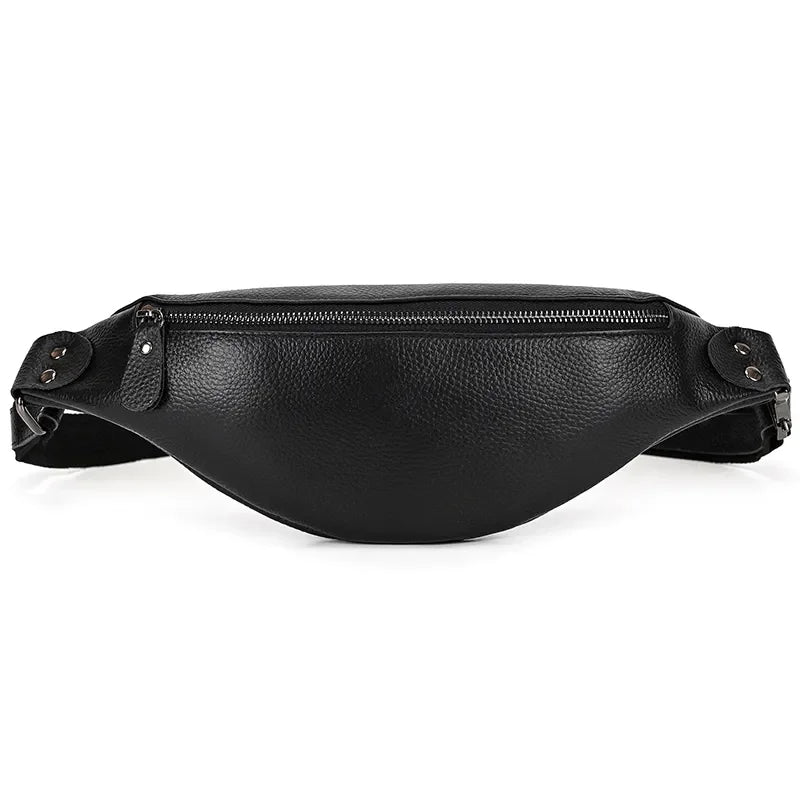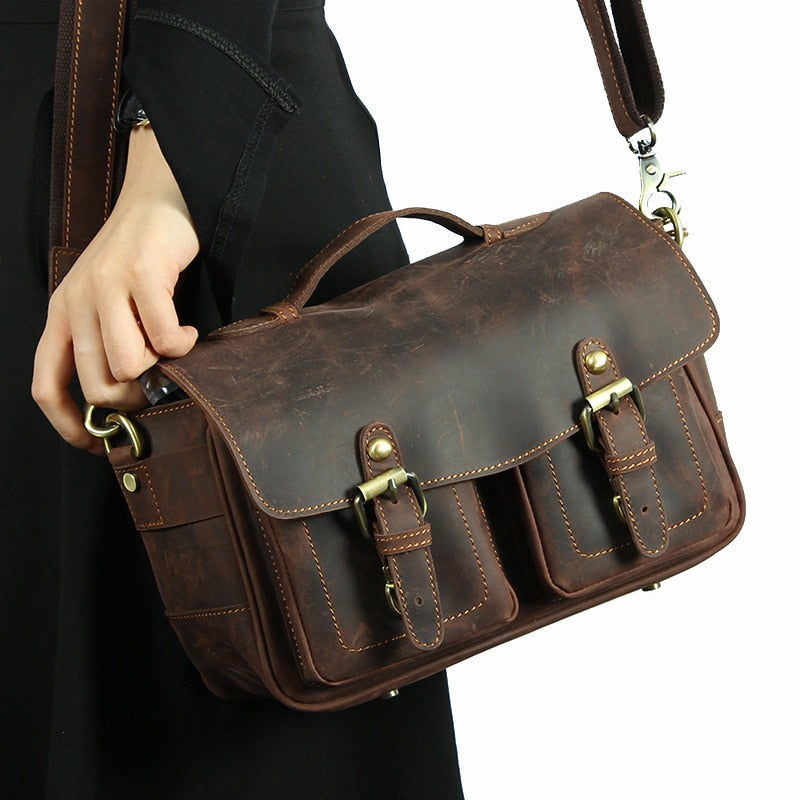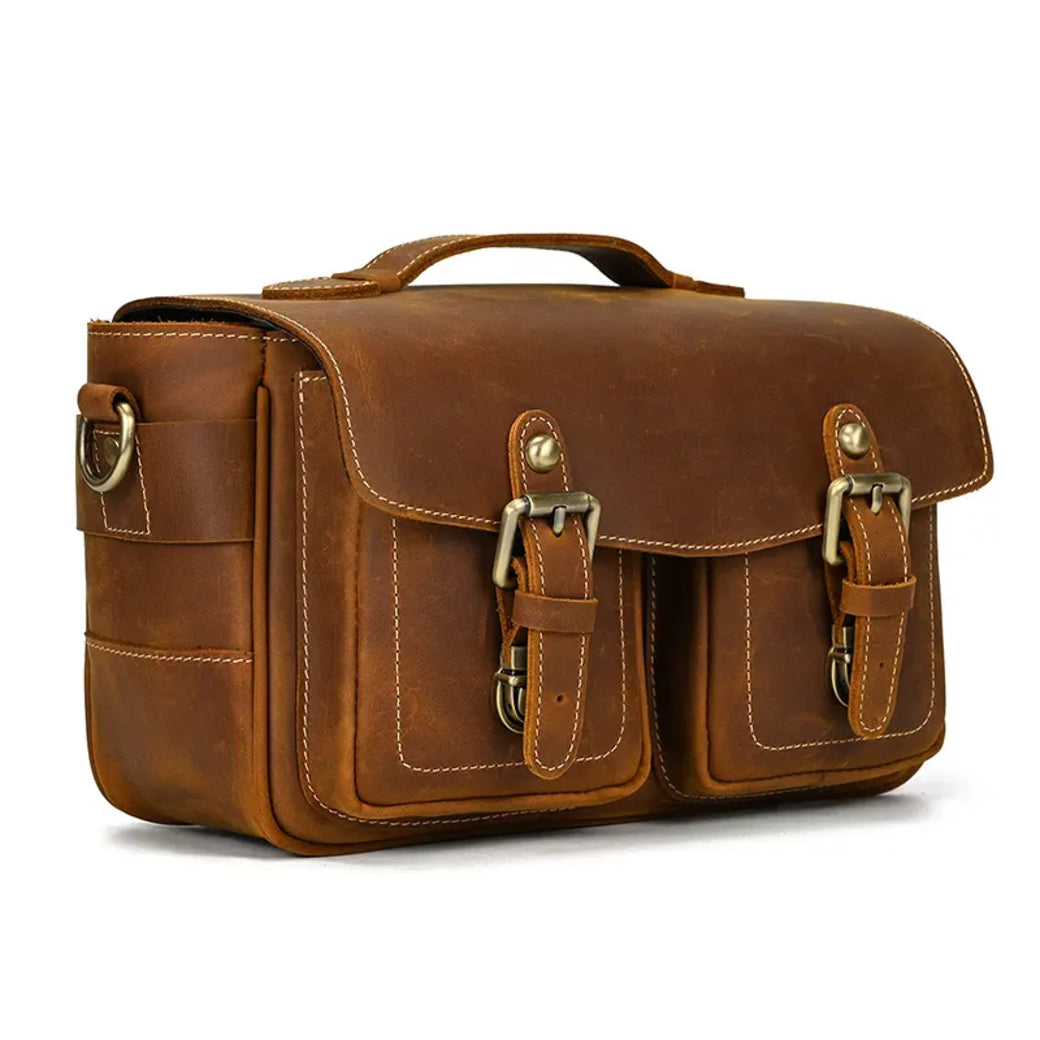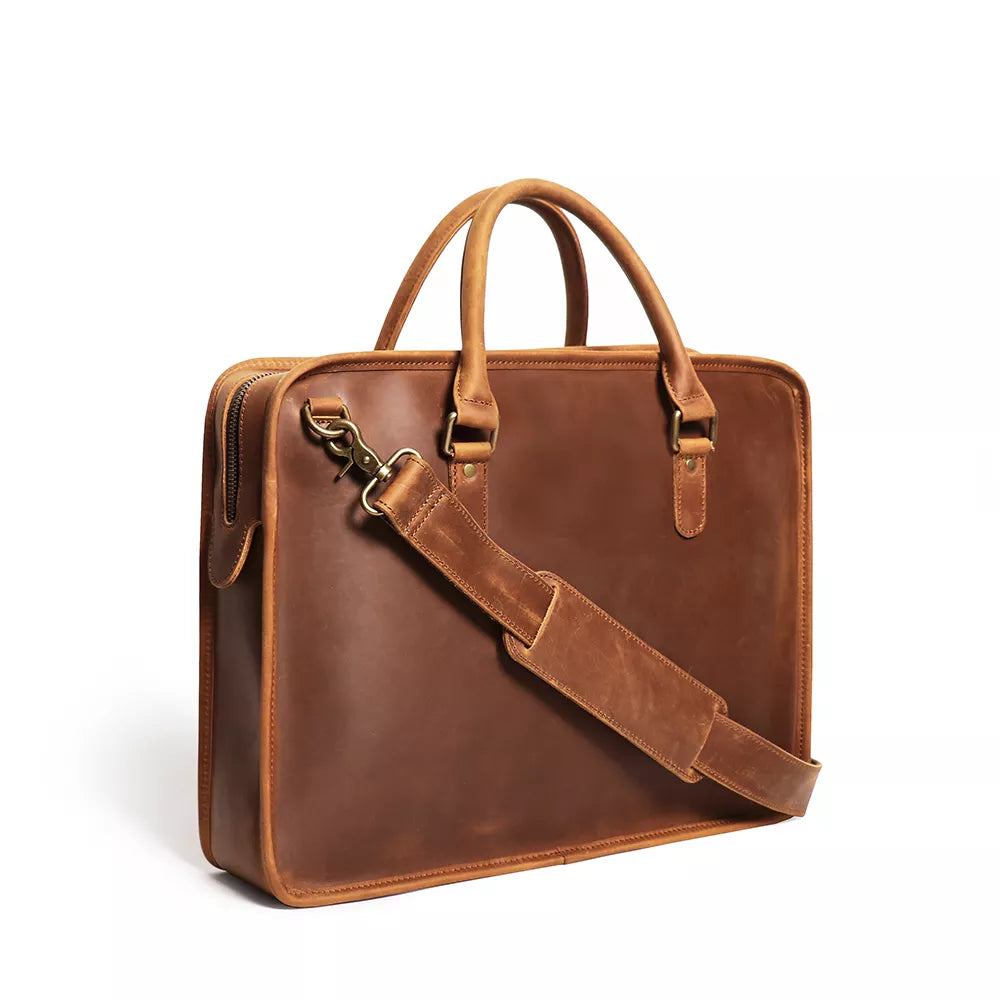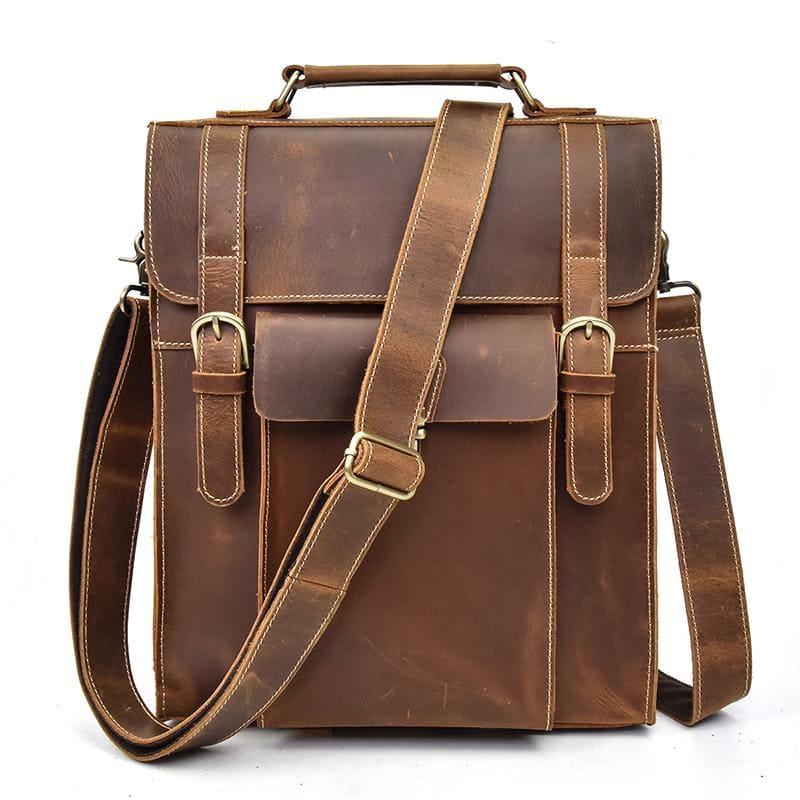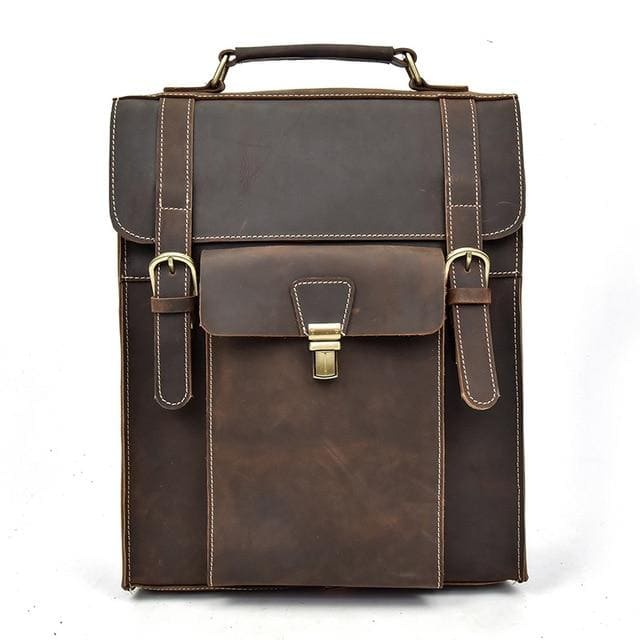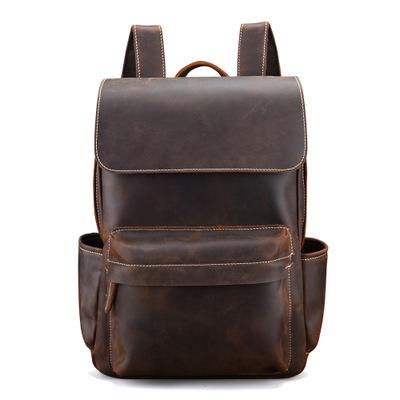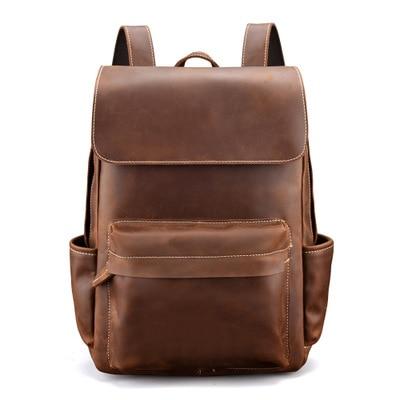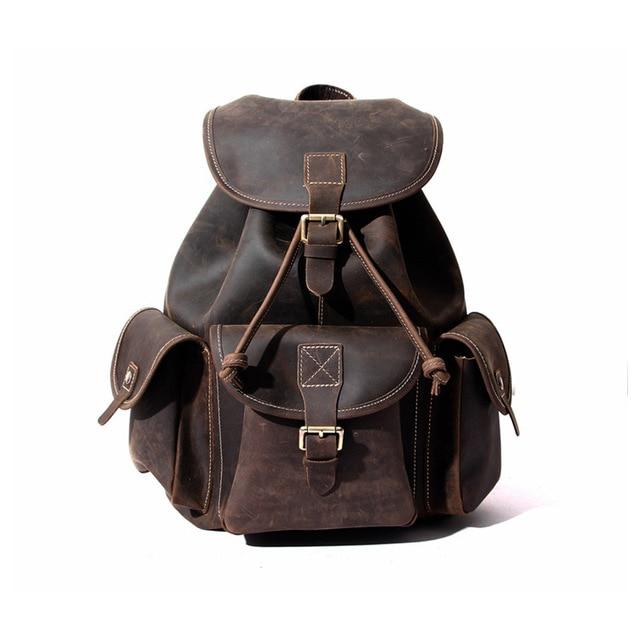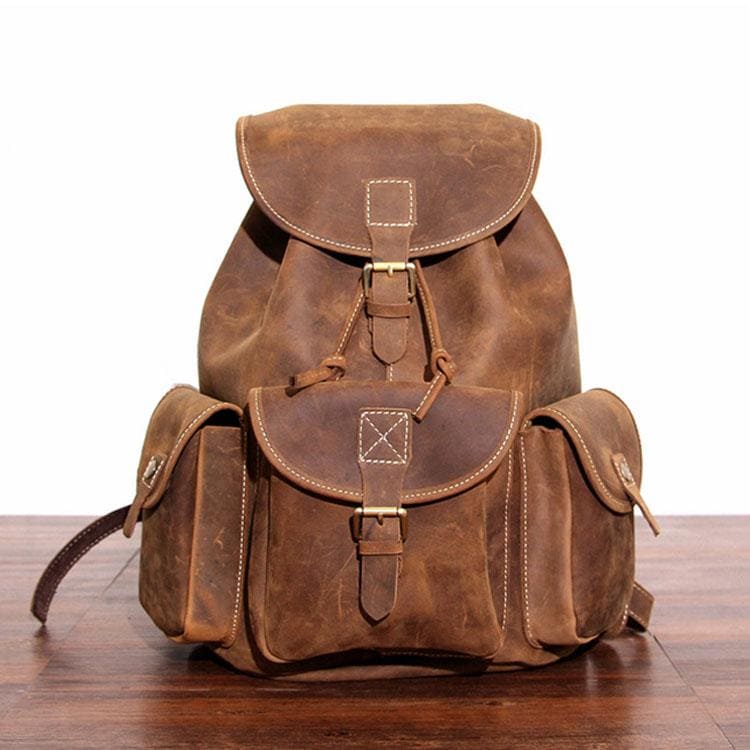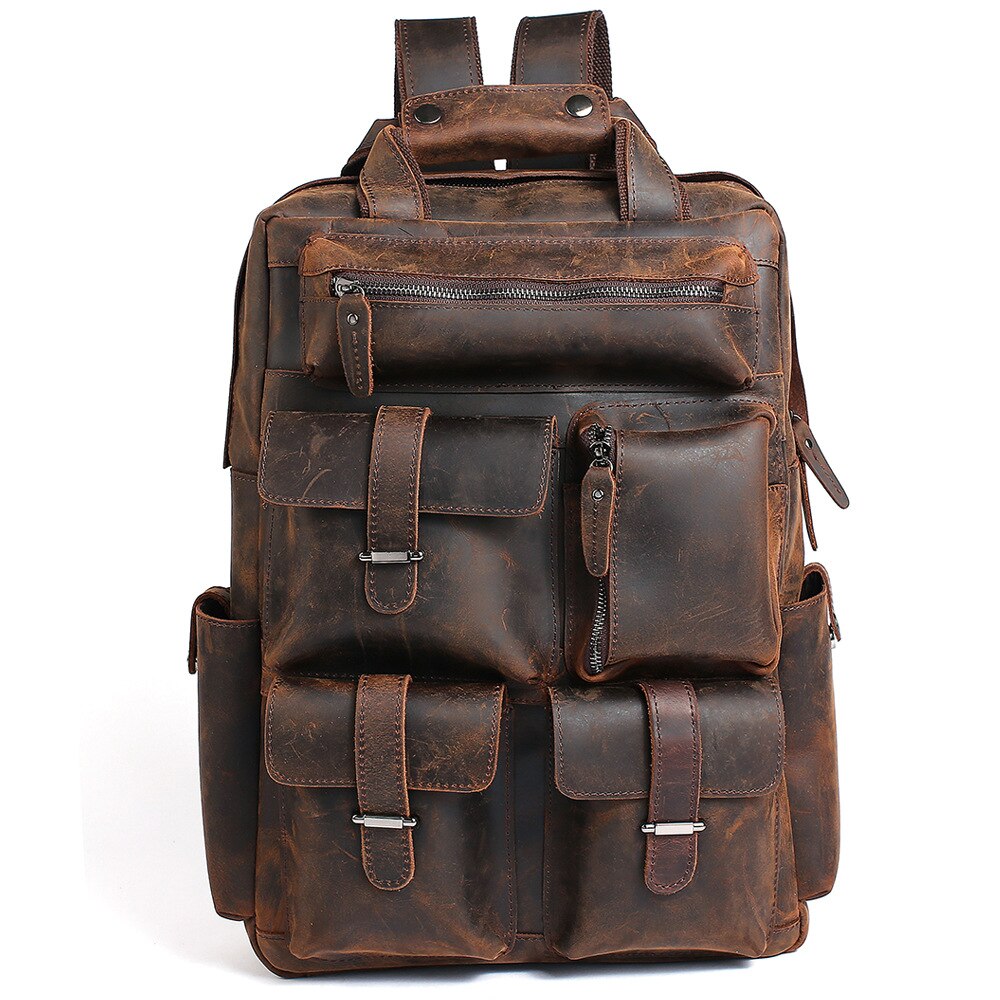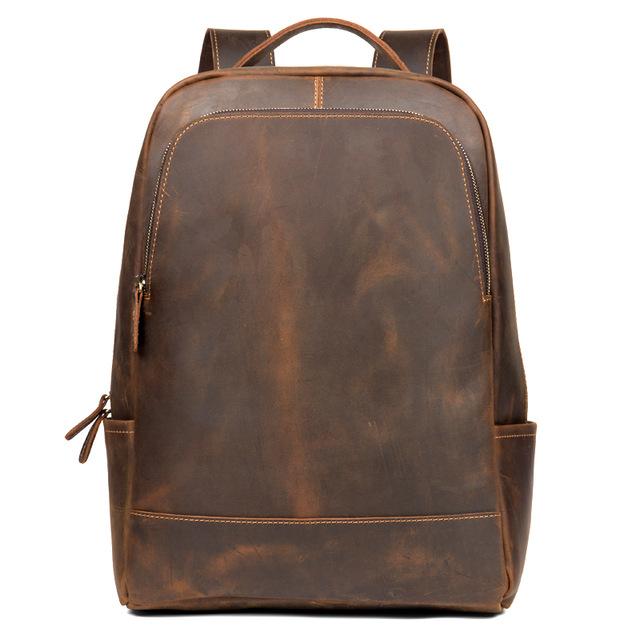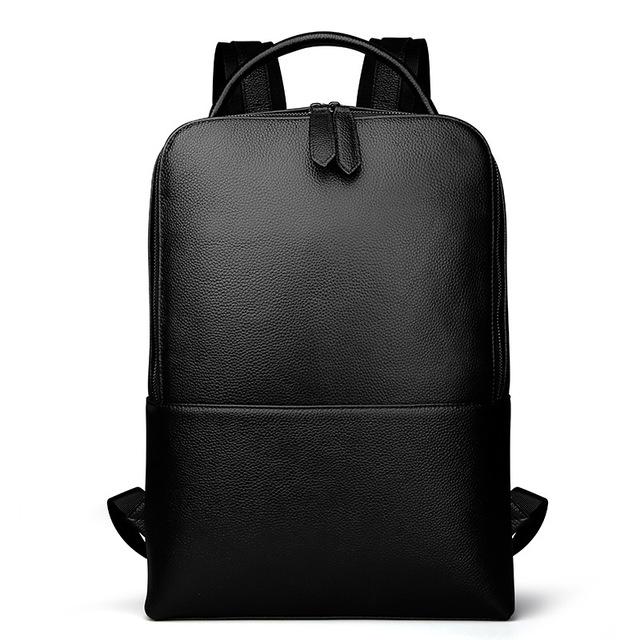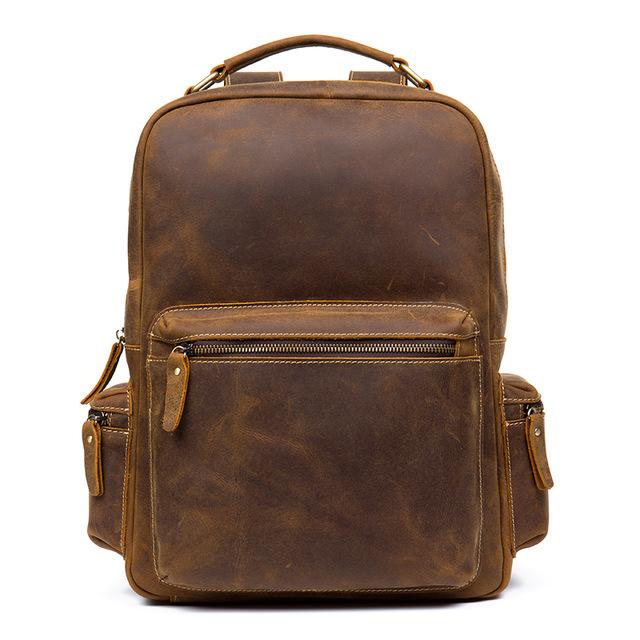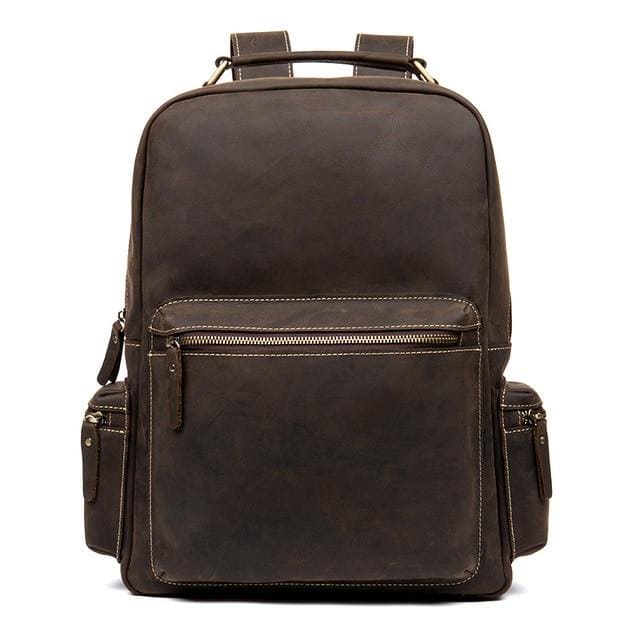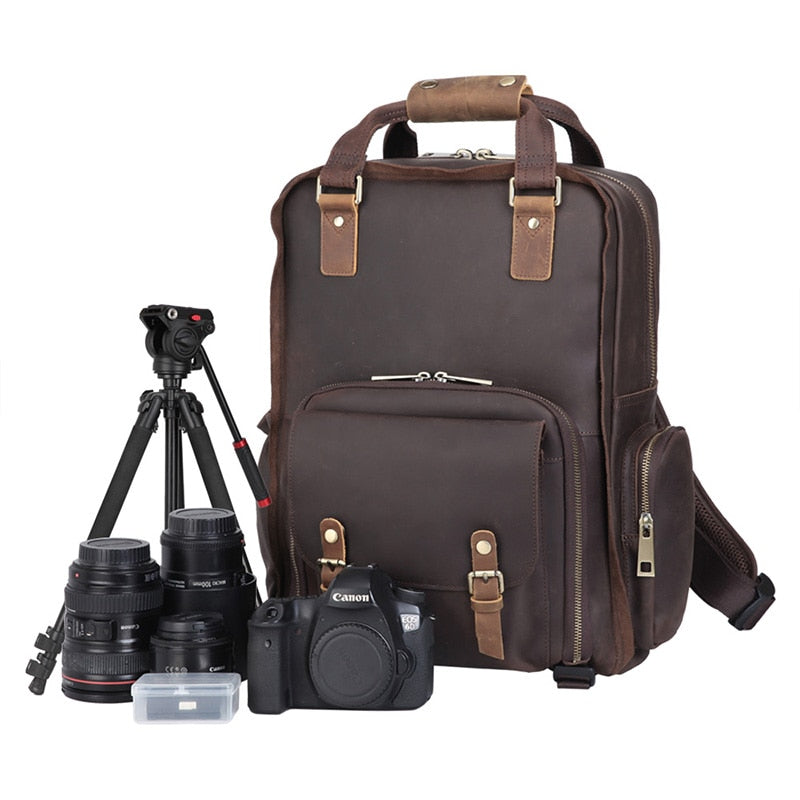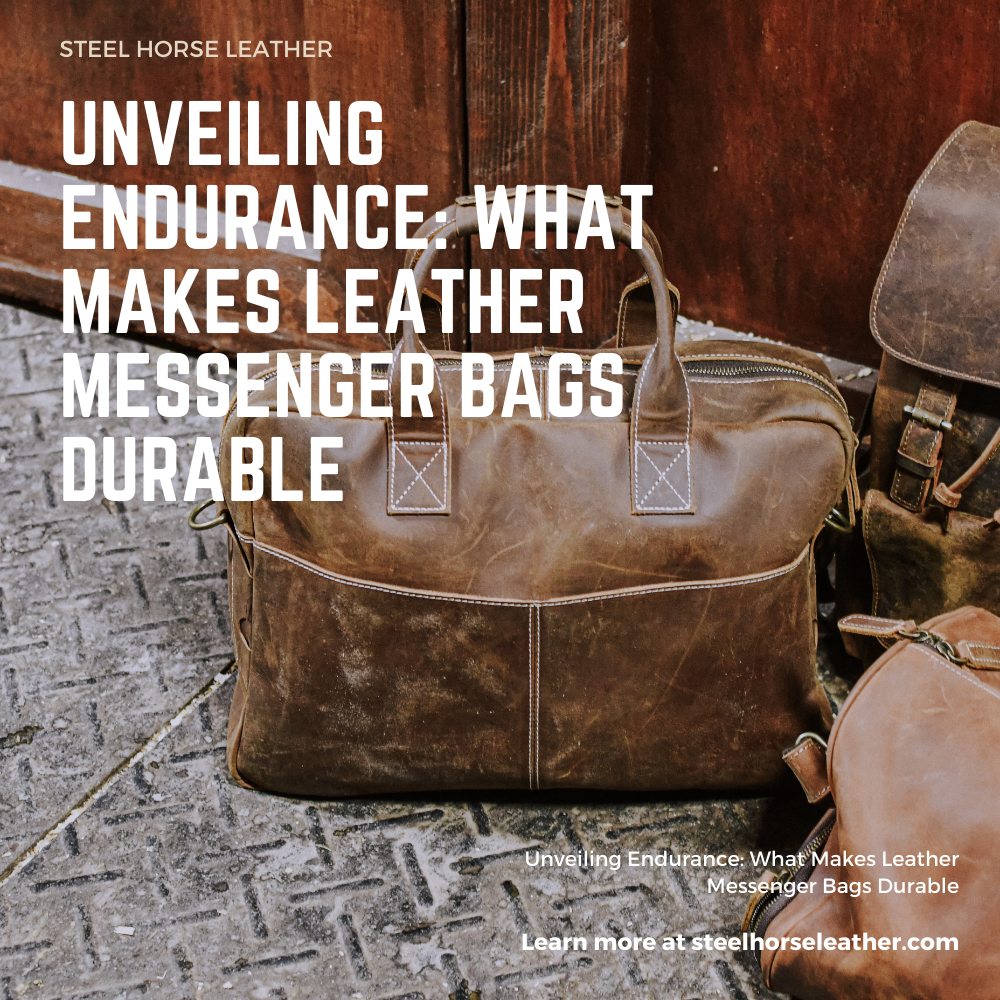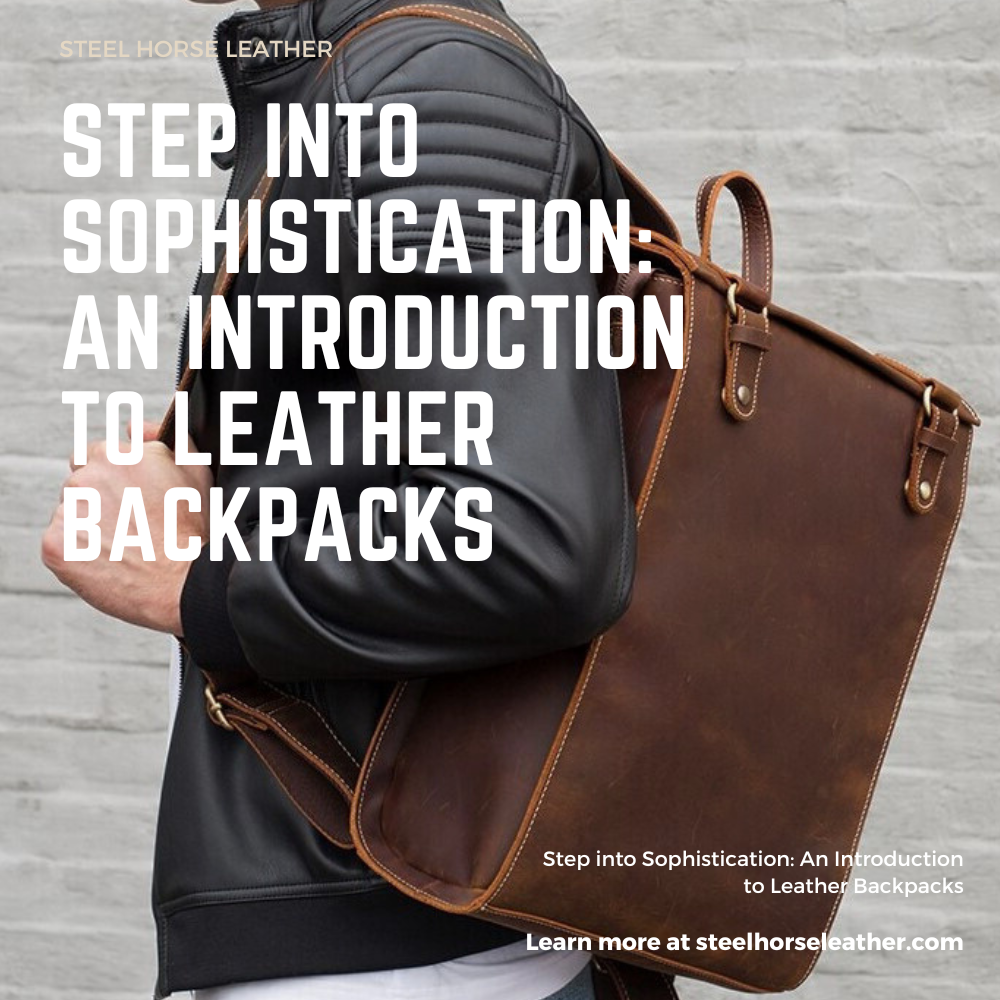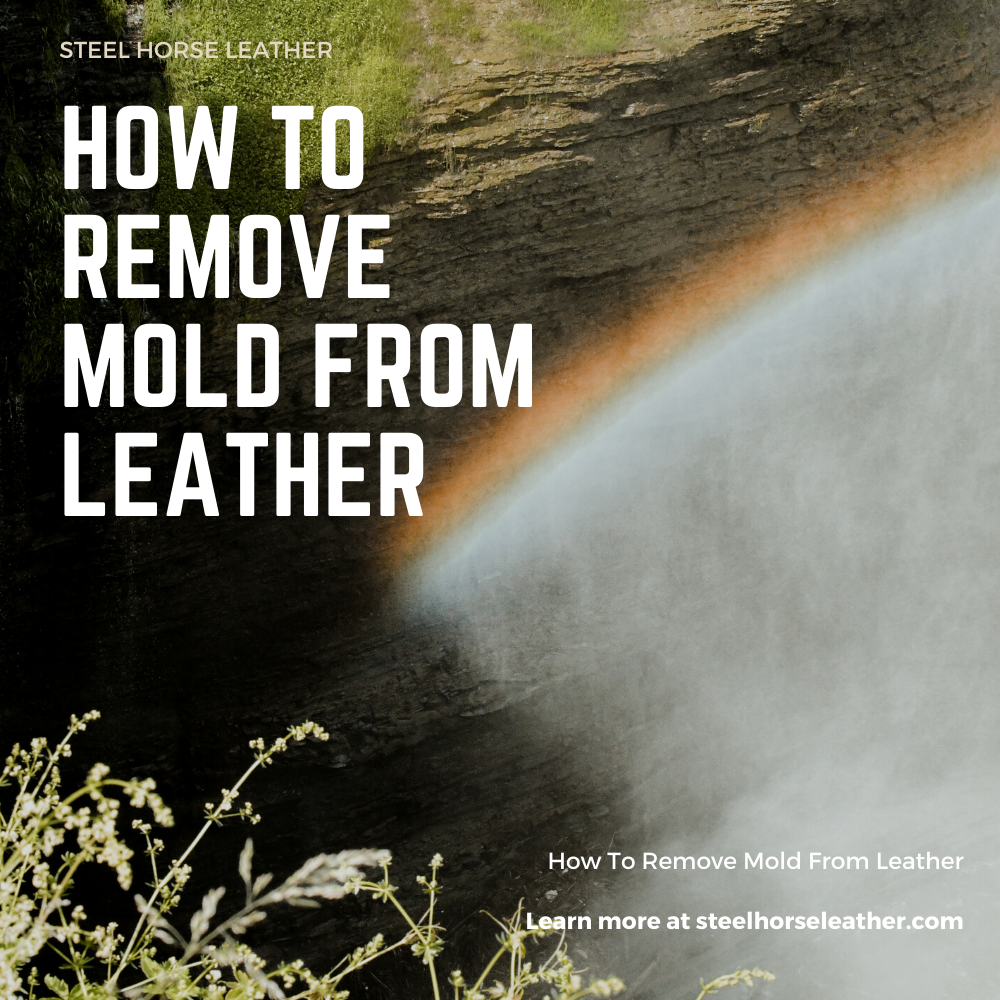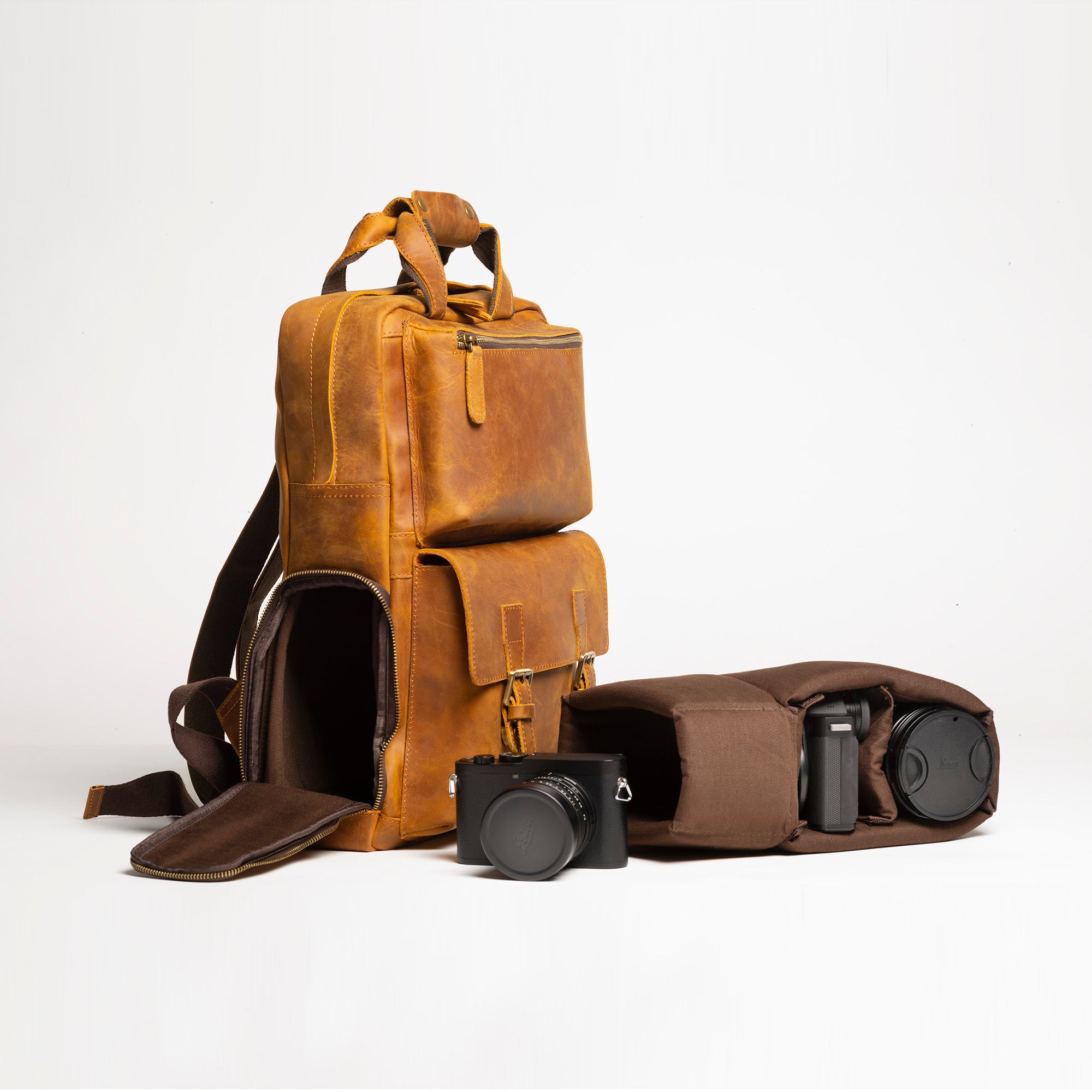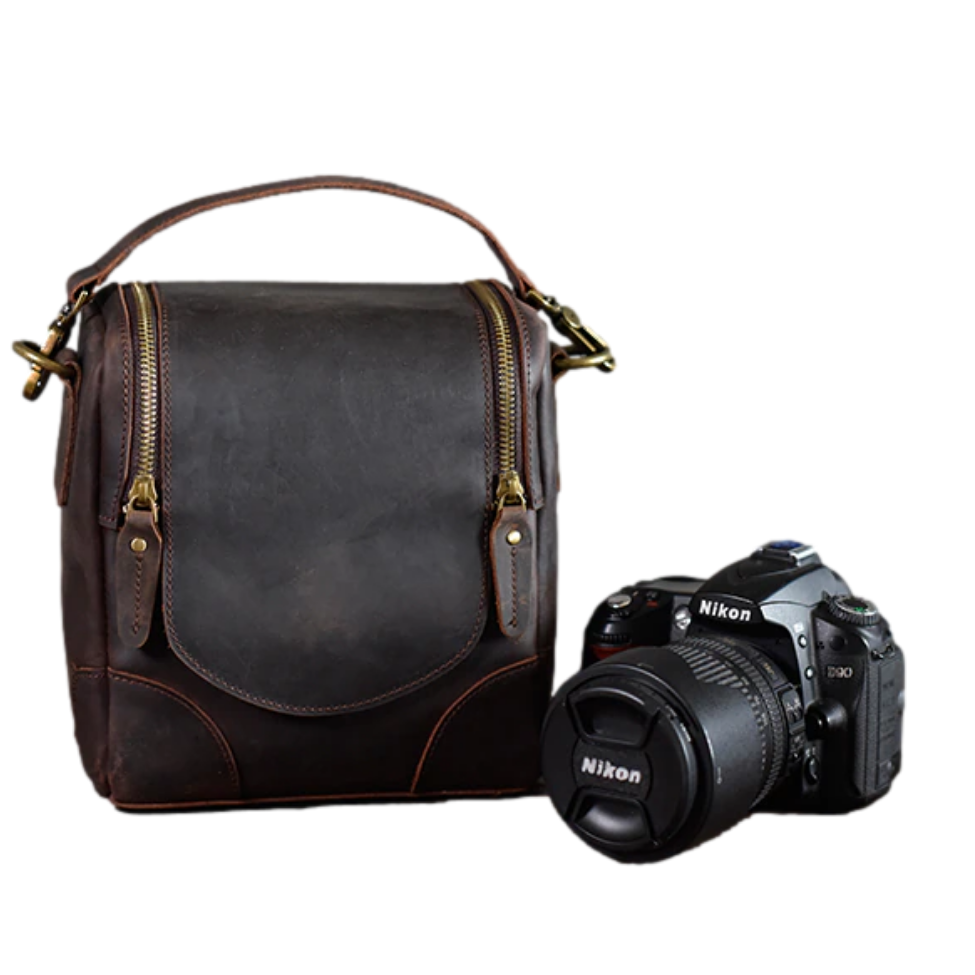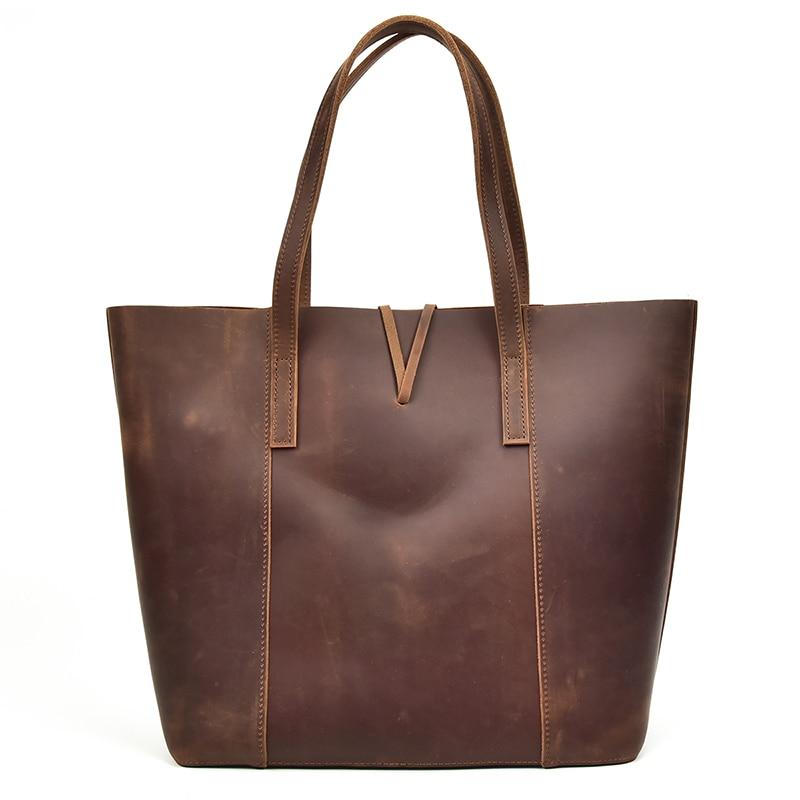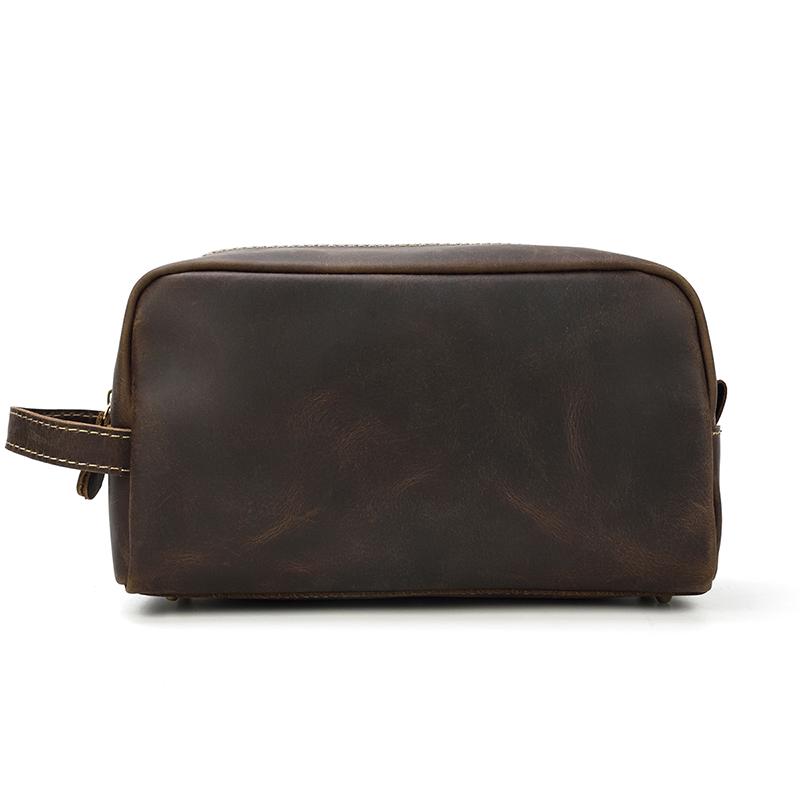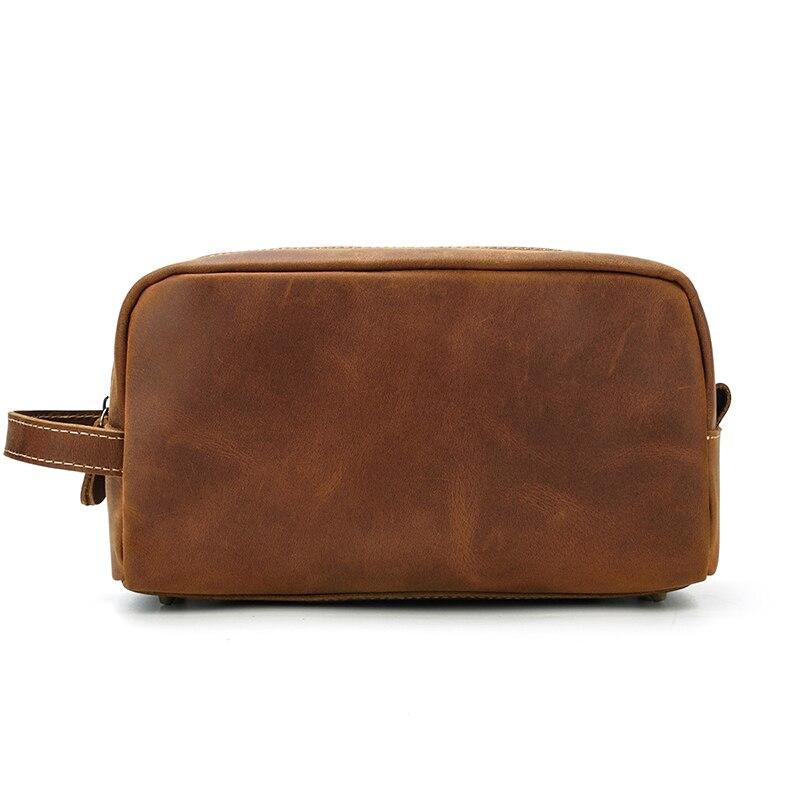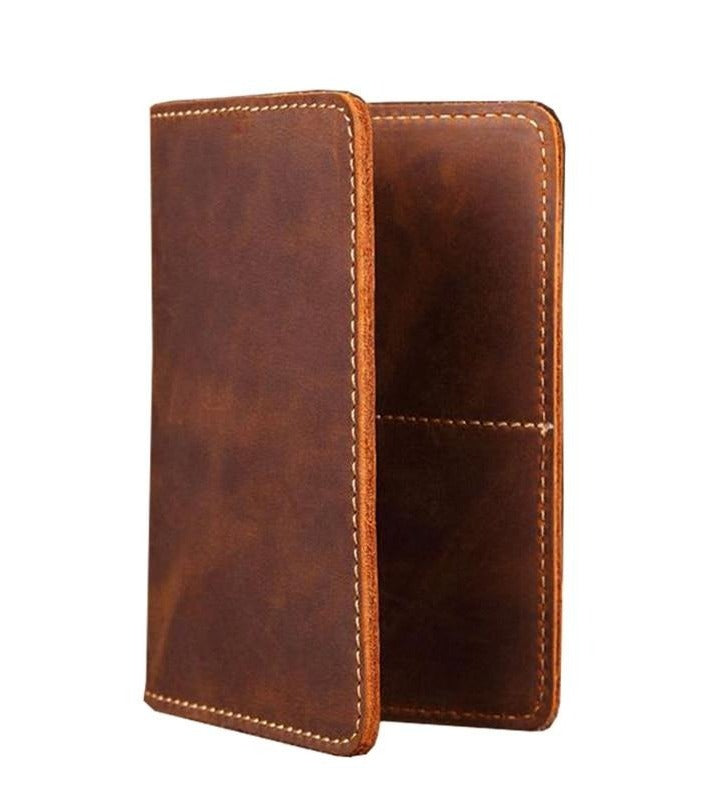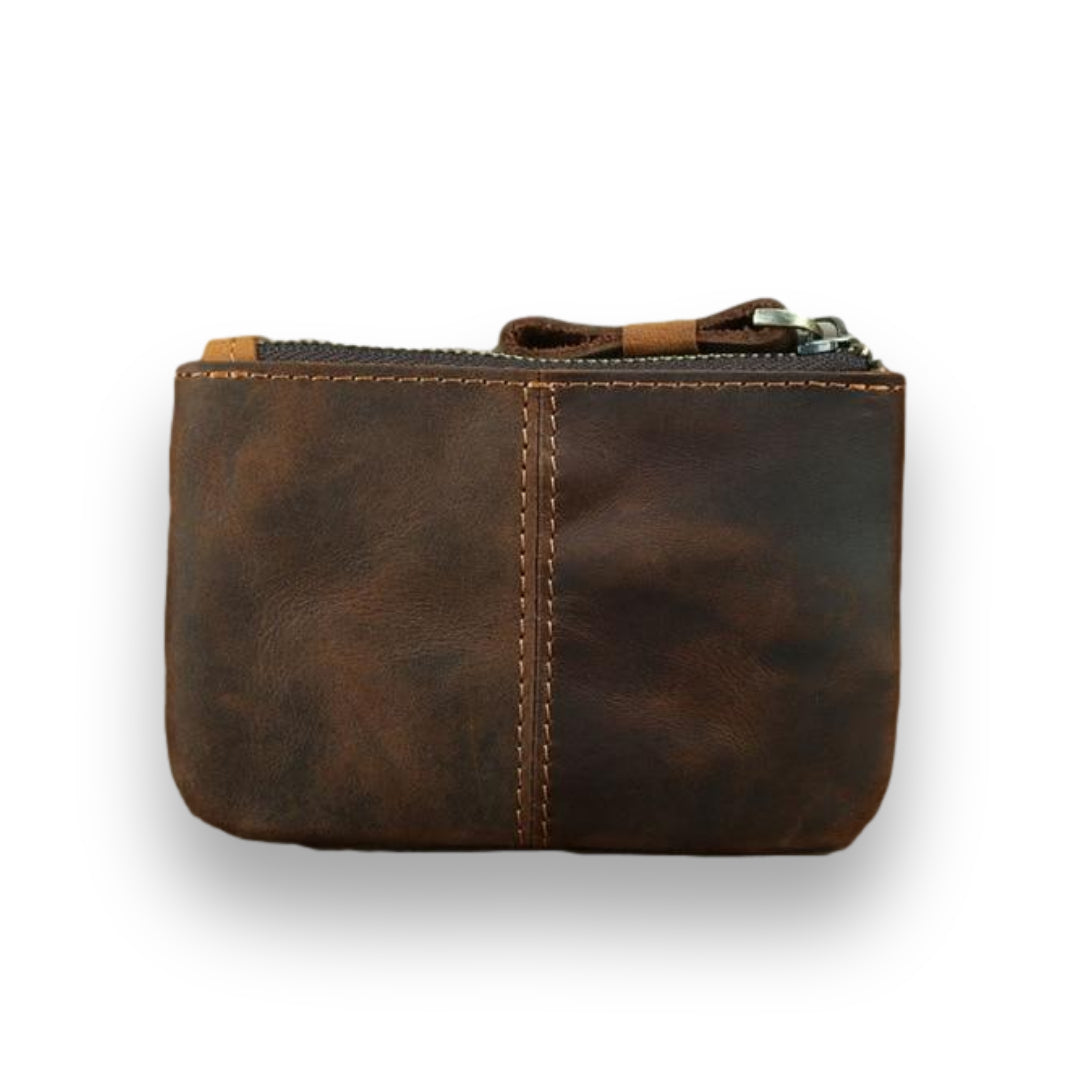A bag is something we need for both aesthetic and functional purposes. We use bags every day to help us simplify and carry on with whatever we need to do. And it turns out that there's a specific kind of bag for each type of activity you might encounter. Types of leather bags are available in the market and they can be used for different purposes. The most common type is a shoulder bag, which is usually made from cowhide leather, goat leather, and calfskin leather. It is also known as a leather handbag.
We want to find out everything there is to know about bags, including their history, current uses, and anything else that might be interesting. We've included some of the more commonly used leather goods items here. If you're thinking of buying a new bag or wondering what else is available, we have a list of some of the best options just keep reading on.
Key Takeaways
- The leather industry has evolved significantly from ancient times to modern manufacturing, with the United States being a leading supplier of raw materials.
- Different types of leather bags serve specific purposes, from everyday use to specialized functions like camera bags or travel luggage.
- The quality of leather depends on multiple factors, including animal source, processing methods, and the specific part of the hide used.
- Tanning methods (vegetable, chrome, aldehyde) significantly impact leather characteristics and environmental considerations.
- Understanding leather types and quality indicators helps consumers make informed purchasing decisions for leather bags.
History of Leather

Before we dig deep into the different types, qualities, and characteristics of leather, let's take a look at its history and how it has evolved over time. Tanning leather has been around for hundreds of years. It's one of humanity's oldest professions. Tanning has been used for thousands of years by people from India, Egypt, Greece, China, and Mesopotamia. Leather was used to create intricate clothing items such as shoes, gloves, and armor from ancient times until today. It was also used for making bucket bags, bottles, and weapons.
Industrial Revolution and Modern Era
During the Industrial Revolution, new technologies were developed that allowed for the production of high-quality leather at an affordable price. Leather was first produced in America during colonial times. During the eighteenth century, it grew with the population. By 1850, there were over 1 thousand tanning factories in the U.S. By 1840, the population was more than eight thousand. At one point, the primary leather activity was shoemaking. By the end of the 19th century, there were approximately 11,500 shoe manufacturing companies operating in America.
Current Industry Status
The United States leather industry exports more than its entire leather inventory. The U.S. is one of the world's leading suppliers of raw materials used by the leather manufacturing industry. Exports from the United States alone are worth nearly $300 billion each year. The hide, skin, and fur trade exports more than $2 billion worth of cattle hides, pig skins, and semi-processed leather products every year.
Leather goods are expected to grow at an average rate of 5 percent per year between 2016 and 2021. Leather varies greatly in quality. There are different types of leather, including top grain and genuine. They're just different types of leather, based on their quality.
Types of Leather Bags
Leather Backpacks & Waist Bags
Leather backpacks are one of the most popular types of bags because they provide a convenient way to carry all sorts of things. Backpacks come in a variety of styles and sizes ranging from very small backpacks to huge ones meant for hiking. The price depends on the leather grade used.
Every bag that is primarily carried on your back or is worn on your waist is considered a backpack or a waist bag. A backpack is a large bag used to carry things on your back and is usually larger than a day pack. It's designed to hold more stuff than a day pack. Backpack use has existed for thousands of years, but the modern backpack was invented in the United States during the 1910s.
Waist bags are smaller bags that are worn around the waist. They are often used by women who don't like carrying big bags on their backs. Some people prefer wearing a small bag on their hips because it looks better and feels more comfortable.
Leather Clutch & Handbag Bags

Clutch bags and handbags include all of the smaller bags that are typically carried without any sort of strap. They can be made from any material including leather, canvas, nylon, plastic, etc. Clutches are often small enough to fit inside a pocket or purse. Leather handbags are generally bigger and have straps so that they can be carried by hand.
Handbags come in many shapes and sizes. There are purses, tote bags, satchesls leather, leather briefcases, laptop bag, and even diaper bags. Each one serves its own purpose depending on where you plan to wear it. For example, if you're going to work, then you probably won't want to bring along a diaper bag. But if you're heading to school, then you may want to consider bringing along a briefcase instead.
A prime example of modern leather bag innovation is The Dagny Weekender, a full-grain leather travel bag that exemplifies the perfect blend of functionality and sophistication. During its development, careful attention was paid to addressing common traveler pain points, resulting in thoughtful features like multiple interior pockets for organized storage and a laptop compartment. The bag's design incorporates an ultra-soft leather handle and optional removable shoulder strap, demonstrating how contemporary leather craftsmanship can enhance the traveling experience while maintaining traditional aesthetic appeal.
Leather Pouch

A pouch is a type of bag that is usually closed at one end by a zipper. Its first known use was recorded in Medieval times when it was used to carry items in a bag made from a drawstring. Today, the pouch has become a versatile tool used to hold small items either as a handbag or as an organizer inside larger bags. Pouches are great for holding pens, keys, coins, and other small items.
Leather Crossbody & Shoulder Bags
A crossbody bag contains all of the bags that can be carried on one shoulder or across the shoulder by means of a single strap. This includes leather messenger bags, satchels, and duffel bags. Crossbody bags are popular because they allow you to carry multiple types of bags in one place. You can easily switch between them depending on what you need to carry. This type of bag become popular in the 1980s when women started wearing dresses with slits on the sides. These bags were called "slash" bags because they allowed women to wear skirts while carrying a bag on their shoulders.
Shoulder bags are among many traditional designs that tend to work well with different styles. It depends on the size, but it can hold most - or all - of your accessories and tools for beauty needs. You can choose from a variety of different shapes. Sometimes a neutral shoulder bag just doesn't fit into an outfit well enough to be appropriate. With so many different colors available for your bag, you're sure to find one that matches your favorite outfit. Your personal style doesn't need to be loud or refined. You can choose from a wide range of colors including black, dark brown, blue, and light green to complete your outfit.
Leather Athletic & Functional Bags

Functional and athletic bags cover bags that serve a specific function, such as a camera bag, a golf bag, or a leather travel bag. Unlike the previous categories which grouped bags by how they were carried, athletic and functional bags can be carried in a number of different ways.
An example is called the "Small Traveling Pouch," which is designed to be worn on your body and hidden under your clothes. It's commonly used when traveling to keep expensive items safe. Another example is the "Camera Bag" which is designed to be attached to your belt or hung around your neck. The "Golf Bag" is designed to be carried over your shoulder and is usually filled with clubs and other equipment. The "Travel Bag" is also designed to be carried over the shoulder and is usually used to store clothing and toiletries.
Functional and athletic bags cover bags that serve a specific function, such as a camera bag, a golf bag, or a leather travel bag. A prime example of a versatile functional leather bag is The Endre Weekender, which exemplifies the perfect balance between style and utility. Made from premium quality leather, this weekender bag features a spacious main compartment with dedicated pockets for organization, including a separate compartment for shoes. Its dimensions (20.4" x 12.6" x 11.8") make it ideal for short trips or daily use, while its dual carrying options – a comfortable leather handle and an adjustable shoulder strap – provide flexibility in how it's carried.
Leather Luggage & Trunks
Travel luggage & trunks are primarily used for carrying personal belongings during travel. Most of these are large enough to be called "large" bags. Trunks have been around for millennia; however, the most common types seen and referred to today come from the late eighteenth century to the early twentieth century when they were replaced by cheaper and lighter suitcases.
An example today is called the duffle bag, which was originally made out of canvas. They were first introduced in the nineteenth century and became very popular in the 1920s. Duffle bags are still being produced today, although they are now often made of nylon. A duffle bag is typically larger than a suitcase and has two handles. It is usually made of heavy-duty material and is meant to last a long time.
Trunk boxes were usually made from a wooden base trunk box which was then covered with various types of protective and decorative materials. Early trunks were made from wood, leather, or metal and often had decorative features. Later covers included paper, canvas, plain tin, or embossed tin. There were countless varieties of hardware and hardwood. They were often made with a small brass knob on top and were made in many different sizes.
Classic trunks were widely used throughout the first two decades of the 20th century but began to decline in popularity after that time in favor of modern suitcases. Their use was nearly forgotten by the middle of the 20th century but has been revived recently.
Leather Wallets & Purses
Wallets and purses contain a category of smaller bags that are used to hold and access monetary items. A purse is a small bag used to hold money and everyday personal items such as keys, wallets, phones, etc. Purses come in different sizes and capacities but typically feature a zipper on top for easy access. A purse may be hand-held or attached to the user's arm via a strap. Some purses are designed to be worn on the waist while others are designed to be attached to a belt loop.
The wallet is a term used to describe a collection of cards, cash, and other financial documents. Wallets are generally larger than purses and are usually worn on the hip or at the side. Many wallets include compartments for holding credit cards, identification, and receipts.
Leather Hobo Bag
A hobo bag is a type of backpack that is similar to a duffle bag. Hobo bags are usually made from durable fabrics and are usually equipped with wheels for easier movement. They are usually used for carrying heavy loads and are popular amongst travelers who want to bring their own style to their travels.
Hobos are usually used for carrying sports gear, camping supplies, or anything else you need to transport. They can also be used for storing clothes, shoes, toiletries, books, or any other item.
Best Sources of Leather

They are nothing but various kinds of leather depending on their quality. Now, can you achieve the most value from your investment? You can definitely do it. Knowing where to buy leather is just not enough, you must learn to distinguish between different types of leather. You will need to know why certain materials last longer than others, and why one type of leather bag costs so much, whereas another costs just a few hundred dollars. What is the best leather? Well, there isn't one single answer for the best quality leather bag depends on several important factors, including:
Type Of Animal And Breed
Cows from different breeds will produce different types of leather because of their genetics and environmental conditions. Hot climates tend to have insects that bite the animal and leave scars whereas cold climates don't suffer from pests as much. Some breeds may be better suited for colder climates than others because they have thick coats.
For example, cows from the American Holstein breed are known for producing very soft leather. This is due to the fact that they have a thicker coat than other breeds. However, this doesn't mean that all Holsteins make good leather. It also means that if you want to get the best quality leather, you should look for a cow that has been raised in a hot climate.
Another thing to consider when buying leather is the age of the animal. Younger animals have thinner coats which makes them easier to work with. Older animals have thicker coats which makes them harder to work with.
Physical Location And Climate
Physical location and climate where the animal lives play an important role in determining what kind of leather you'll end up with. For instance, if you live in a cold region, you won't find many cows that would survive in those temperatures. If you live in a warm area, then you'd likely see more cows that could withstand the heat.
It's also important to note that some parts of the country are better suited for certain types of leather. For example, Texas is famous for having cattle that produce great leather. On the other hand, California produces high-quality leather because of the weather.
The Portion Of The Skin That Was Removed
Leather from different parts of the animal yields different qualities of leather. For example, the lower portion, which is usually made from skinless cowhide, has loose fibers that make up the leather. The looser fibers absorb water and expand when wet. It's important to note that lower portions of the skin also tend to be marked by insect bites and scratches like barbed wire fences. There are also more folds in the skin around the face, neck, and head than there were before. These scars and wrinkles are permanent and are almost impossible for them to be removed during the tanning process.
On the other hand, the upper portion of the skin contains collagen, which is what gives the leather its strength. Collagen is found in the top layers of the hide. When the hide is tanned, the collagen becomes insoluble and turns into gelatin. Gelatin is the main component of leather and is responsible for giving the leather its durability.
The Layer Of The Hide That Is Used
There are different layers within the hide which also have an enormous impact on the quality of the leather. Full-grain leather split and top-grain are the best. Top-grain leather is made from the outermost layer of the hide. It is the thinnest and strongest part of the hide. It's also the most expensive. Full-grain leather is made from the middle layer of the hide. This is the thickest and weakest part of the hide. Full-grain leather tends to be softer than top-grain leather. Split leather is made from the innermost layer of the hide and it's the thinnest and weakest part of it. Split leather is used mostly for shoes and boots.
Quality And Skill Of The Processing And Tanning
Quality and skill of the processing and tanning play a major role in determining the quality of the leather produced. A good tannery will use only the highest quality hides and will pay close attention to detail. They will take care not to damage or cut any of the hides while removing them from the carcass. They will also remove all hair and fat from the hide. Also, they will wash the hide thoroughly and dry it properly. The good skill of the tannery gives the leather a smooth surface and even color. Good skill of the tanner can also help prevent cracking and splitting of the leather.
How Leather Is Made

How leather is made is always asked into question. It is very simple to understand how leather is made but it is difficult to explain. In order to make leather, you need to start with the raw material - the hide. Leather thickness and weight determine what the final product will be like. For example, thinner leathers are used for making jackets, furniture, moldings, and linens. On the other hand, thick leather is often used to make things like leather belts, knife sheaths, holster bags, saddle leather, and leather dog collars.
A pound is the standard unit for measuring the weight of leather. Some thickness charts may also use mm and inches as their measuring units. An ounce of leather typically measures one-sixteenth of an inch thick. But the leather thickness varies slightly depending on whether the hide has a uniform thickness. Rawhide has a more consistent thickness than split leather.
You can adjust the thickness according to your own preferences. Maintaining the recommended thickness will increase the longevity of the product. Tanning leather takes time and effort. Despite making it easier for people to perform, manual labor still requires a lot of effort and time. The purpose of the sunbathing process is to alter the proteins of the skin so they become more durable, textured, and attractive.
Preparatory Steps

Before the leather hide is tanned, it must first be prepared for the tannervy process. There are various preparatory processes for removing unwanted raw ingredients from the skins, but they're all designed to get rid of them. Some tanneries may not perform all of these processes, but they're worth trying if you want high-quality leather products.
Soaking
After soaking, the cured hide is usually soaked in water for several minutes to several weeks. This process not only restores the moisture lost during salting, but helps to remove dirt, debris, blood, and excess animal fats. It's important that the soak lasts long enough to allow the hide to absorb the necessary amount of water. Too much water could cause the leather to swell up and crack.
Fleshing
This process removes fat cells from the skin. The pelt is then passed through a mechanical device to remove the fat, muscles, and meat from it. Salting, drying, or fermenting, usually happens after the meat has been processed. After tanneries have finished processing hides, they may be split into different types of layers.
Un-hairing
Hair removal is done by removing hair mechanically with tools such as rollers and razor blades. Un-hairing is often performed at the same time as fleshing. Hair removal is essential because it prevents the hide from absorbing oils from the hair follicles. If the hair is left intact, it would prevent the hide from being properly tanned.
Pickling
Rawhide needs to be cleaned and soaked in acids or salts to avoid decomposition. It helps the penetration into the skin of agents such as chromates and aldehydic. Stronger pickling agents are used to preserve hides for several months. The pickling process is particularly crucial as it serves multiple purposes beyond simple preservation. Research has shown that sulfuric and hydrochloric acids used during pickling not only acidify the collagen but also play a vital role in improving its interaction with tanning agents, ultimately affecting the final leather quality (Moujahed et al., 2022). Additionally, recent studies indicate that enzymatic treatments during pickling can enhance the permeability of the hide while preserving the collagen structure, contributing to increased thermal stability in the finished leather without compromising its integrity (Biškauskaitė et al., 2021).
De-Pickling
After pickling, the hide is soaked in sulfur dioxide to lower its pH. Sulfur dioxide is an effective de-pickling agent because it reacts with the protein structure of the hide. This causes the hide to lose some of its strength and flexibility. De-pickling also makes the hide softer and smooth leather.
Liming
This process loosened the fibers and allowed the skin to soak up various tanning chemicals. Sodium sulfide and hydrated limes are usually used to remove hair and wool from hides. As the pH rises, fats get broken down into smaller molecules. When water enters the skin, it swells up the skin fibers, which results in a swollen skin texture. Liming softens the skin and allows it to absorb more chemicals.
De-Liming
After washing the hides, they're soaked in a solution made up of water and either ammonium chlorides or ammonium sulfates. This reduces swelling by removing excess water from the skin.
Bating
Bating marks the end of the liming process. Proteolytic bating enzymes treat flaccid skin by removing non-fibrous protein. It removes impurities from the skin and gives it a soft feel.
De-Greasing
Water-based products and solvents are sometimes used to cleanse the skin of excess oils or greasy substances. These solvents can be harmful if inhaled, so care should be taken when using them.
Bleaching
To make the hide colorless so that it can be dyed later, chemical agents are applied. Bleaches are usually composed of chlorine compounds. They help to break down the collagen fiber network, making the hide lighter in color.
Tanning
Leather production involves producing a durable and non-decomposable product from raw animal hides. Tanning turns the protein of the raw hide into a durable material. There are three main types of tanneries: Mineral tanneries, vegetable tanneries, and glutaraldehyde tanneries.
Vegetable Tanning
Tanning using vegetable products has been around for thousands upon thousands of years. It doesn't use any harmful chemicals. Instead, it uses a natural astringent compound called tannin. This is usually found inside the bark, leaves, and branch of tree species such as oak, chestnuts, or mimosas. Tannins give leather its characteristic colors and textures.
However, the process takes a lot of effort, requires lots of manual labor, and costs a lot There are two main types of vegetable tanning methods. The slower method requires about 30 days, while a faster method only lasts about 36 to 72 hours. Sometimes, however, a slow treatment takes several months because it requires multiple sessions.
It produces high-quality, durable, and long-lasting products. Research confirms that vegetable tanning, which employs natural tannin sources such as those derived from mimosa, tends to yield more durable leather with a unique patina over time (Ražić et al., 2022). Vegetable tannins are often applied to the leather to create products such as saddle bags or holster belts. Its unmatched durability and distinctive look make this leather ideal for printing and intricate leathercrafts such as tooling.
Mineral Or Chrome Tanning
Mineral or chrome tan is the most common type of tan because it's quick, affordable, and less time-consuming than the other types. It was first introduced in 1858 as an inexpensive and faster way to produce leather than the traditional vegetable tanning process. It takes less than an hour to complete. For most people, the time required for chromium tanning varies from two to three (2–3) hour sessions. But it can take up to 24 hours for thick ones to be made from cattle.
Compared to the size of the molecules of chromium, the size of the molecules for tannins is smaller. Because of this, chromium ions can penetrate the collagen fibers and remove moisture effectively. That's why chrome tannage is thinner and softer than veg tanning. Chromium (III)-sulfuric acid is the most efficient and cost-effective tanning agent. Wet blue leather is also known as chrome tan leather because of its bluish color.
However, the chromium tanning processes create a negative environmental effect by using large amounts of acids and other chemicals, which pollute our environment. Toxic waste can be seeping into groundwater and contaminating our water supply. Environmental issues are a major concern for both developed and undeveloped nations.
In response to these environmental challenges, recent research has proposed chrome-free alternatives that combine plant tannins, such as mimosa, with biogenic silica derived from agricultural waste like rice husks. These innovative approaches significantly reduce the environmental impact associated with chromium waste while still producing high-quality leather that meets commercial standards (Nugraha et al., 2023; Ding et al., 2025).
Aldehyde Tanning
Glutaraldehyde or oxazoline compounds are used for tanneries. It is also known as "wet" white leather because of its light cream shade. Tanned leather is water absorbent, soft, and can easily be machine cleaned. Chamois is an excellent material for making clothing and genuine leather bags.
Oil Tanning
Emulsified oils are often mixed with aldehydes to create extremely soft and flexible materials. This process is called oil tanning. Oil tanning is commonly used for manufacturing shoes. It creates a very smooth leather surface that makes it easier to polish.
The oil tanning process involves mixing animal fats with aldehydes. This mixture is then heated until it becomes liquid. Then, the mixture is poured onto the hide and allowed to cool down. Afterward, the hide is washed and dried. This process is more expensive than the other tanning methods because it requires a lot of manpower and equipment. Also, it takes longer to finish compared to the other tanning methods.
Re-Tanning
Re-tanning converts the tanned leather into a marketable product. The type of chemicals chosen for this process depends on the color and texture of the end result.
Drying
After pressing the leather, the tanned leather goes through another step to remove any remaining moisture.
Shaving
It removes skin residue and makes the surface of the hide uniform. The leather goes through two rollers whereas the top roller has helical blades.
Splitting
A splitting machine cuts the thick leather into one layer at a time. Sometimes, this process may be done after limiting. The top layer of leather is the most expensive. It is used to produce high-quality leather products. The layer without grains is usually made into suede leather. Sometimes, an artificial grain surface can also be applied to it.
Dyeing
All types of animal skin are colored by dyeing them. Water-soluble dyes tend to be more effective at penetrating into the fibers than oil-based dyes. Therefore, it differs significantly from applying dye only to the top layer.
Fat Liquoring
Stuffed fat refers to adding fats, oils, and/or waxes between fiber layers to keep them soft and flexible. If you don't use this step, the leather will dry out and become stiff.
Kinds of Leather Used for Bags
| Type | Quality | Best For |
|---|---|---|
| 🌟 Full Grain | Top layer, natural, patina | Luxury bags, saddles |
| ⭐ Top Grain | Sanded, soft, flexible | Handbags, coats, suede |
| ✔️ Corrected Grain | Inner layer, coated, embossed | Shoes, budget bags |
| 🔴 Bonded | Scraps + glue, painted | Low-cost items |
| 🌈 Aniline | Soft, natural dye, patina | High-end furniture, bags |
| 🛡️ Semi-Aniline | Light coating, stain-resistant | Daily luxury use |
| 🌱 Vegan | Plant fibers (cotton, flax) | Eco bags, cruelty-free |
| 🧪 Synthetic | Plastic/vinyl, waterproof | Wallets, rain bags |
| ✨ Patent | Shiny lacquer coating | Formal bags, briefcases |
| 🇮🇹 Saffiano | Textured, scratch-resistant | Designer bags, shoes |
| 🐎 Crazy Horse | Distressed, rich color | Rare vintage-style bags |
Pro Tip: Vertical fibers = stronger leather. Full grain has the most.
Knowing how to properly prepare rawhide for leather production is an important step toward producing high-end products. Because they're so good at their craft, Italian leather craftsmen are highly regarded by others.
There are usually four kinds of leather. These include Full Grain Leather, Top Grain Leather, Corrected Grain Leather, and Bonded Leather. Leather made from vertical fibers lasts longer than leather made from horizontal fibers because they don't easily come apart. Vertically running fibers, however, are the strongest. The higher the number of vertical fiber strands, the better.
Full Grain Leather
The full-grain leather type is made from the top layer of cowhide. Full grain means that there's no part of the hide left after processing. This kind of leather has retained its natural toughness, as well as its imperfections because there are not any surface alterations or splits.
It is the best quality leather and the only type suitable for saddle bags. So, it's the most expensive. It's difficult working with this leather material. It has an affinity for absorbing oil from the skin and developing a patina over time.
Top Grain Leather
Top-grade leather is the second highest quality of leather. To get top grain hide, the top layer of the hide is usually removed. The surface is sanded to get rid of inherent imperfections. Stains give the leather an attractive appearance.
It also makes top-grain leather softer and more flexible than full grain. It may be strong and durable but it stretches permanently over time and is used to create suede as well as nubucks. High-end products, such things as handbags, backpacks, and coats, are comprised of top-grain leather.
Corrected Grain (Bottom Cut/Split) Leather
Genuine leather also known as Corrected grain leather is made by removing the outer layer of the hide, which leaves behind the innermost layer of the hide called the corium. Leather that has been split tends to be harder than leather that hasn't been split because it lies underneath the softer top layer. Like the top grain leather, the bottom layer is also sanded to smooth out any rough edges. Usually, the surface of the shoe is sprayed with a clear coat and then embossed with a design resembling a natural look. It doesn't alter the inherent breathability of real cowhide.
Bonded Leather
Bonded leather is usually made from leftover parts of the animal skin. This means the dust and shavings. They're glued together by polyurethane or rubber on top of a fiberglass sheet. It is often sprayed with paint to look like real full or top grain cowhide. You cannot determine the percent of natural leather without the company disclosing it - which is extremely unlikely. Bonded or "nubuck" is the lowest quality of cow leather.
Natural leather comes in four basic categories, but there is a wide range of options available depending on the percentage of organic material, strength, and the kind of finishing used. Here are some more types of leather:
Aniline Leather
It is the most naturally soft leather with minimal resistance to staining. Soft and tanned animals' hides, such as Napas, are usually dyed using aniline dioxides exclusively. Aniline dioxides are transparent and water-soluble dye that brings out the natural markings, scarring, and wrinkles in the skin.
Over the years, it develops a natural patina. It is suitable for only high-quality animal skins, so it is one of the highest-priced leather products in the entire industry. It also requires maintenance.
Semi-Aniline Leather
A semi-aniline leather product has a thin layer of color applied to its top side. It is, therefore, stronger than aniline leather but retains its natural appearance. It has stain-resistant properties to some degree.
Vegan Leather
Vegan leather or vegetable-tanned leather is not derived from any animal source. It's made from vegetable fibers, including cotton, linen, hemp, jute, ramie, sisal, and flax. It is very popular among eco-conscious consumers who want to avoid cruelty to animals. It can be purchased in many different colors and textures.
Synthetic Leather
Synthetic leather is created through a chemical process. This is similar to vinyl and plastic. It is commonly used in shoes, bags, purses, wallets, belts, jackets, and other accessories. It is highly resistant to stains and scratches. And also waterproof and easy to clean. Synthetic leather is generally cheaper than genuine leather.
Patent Leather
This leather is often coated with a lacquered layer of plastic to give it a shiny, mirror-like surface. Patent leather is widely used in handbags, briefcases, and luggage. It is durable and long-lasting.
Saffiano Leather
Saffiano leather is a type of Italian leather material that is characterized by its rich brown color. It is strong and supple. Saffiano leather is considered to be the best leather for making shoes and bags. It is also used in furniture, upholstery, and other household items.
Crazy Horse Leather
Crazy Horse leather is a type of exotic leather that is found in South America. It is known for its unique patterning and coloring. Crazy Horse leather is expensive because of its rarity.
Our Expertise in Fine Leather Craftsmanship

At Steel Horse Leather, our deep understanding of leather craftsmanship comes from years of dedicated experience working with this timeless material. Our master artisans have spent decades perfecting their craft, combining traditional leatherworking methods with an unwavering commitment to quality. This expertise allows us to not only create exceptional leather products but also share comprehensive knowledge about leather characteristics, processing methods, and proper usage.
Our commitment to excellence extends beyond mere craftsmanship. We've invested considerable time and resources into understanding every aspect of the leather supply chain, from raw material sourcing to final product creation. Through careful vetting of leather providers and deep analysis of tanning processes, we've developed extensive expertise in identifying and working with the highest quality materials. This thorough understanding enables us to provide accurate, practical insights into different types of leather, their characteristics, and their ideal applications.
What sets our knowledge apart is our holistic approach to leather craftsmanship. While many focus solely on the end product, we maintain expertise throughout the entire process - from understanding the impact of animal breeds and climate conditions on leather quality to mastering various tanning methods and finishing techniques. This comprehensive knowledge base, combined with our artisans' hands-on experience, allows us to offer not just products but educated insights that help our customers make informed decisions about their leather goods investments.
Frequently Asked Questions
What Are The Different Types Of Leather Quality?
There are four main types of leather quality: Full Grain (highest quality), Top Grain (second-highest quality), Corrected Grain (genuine leather), and Bonded Leather (lowest quality). Full grain leather retains its natural characteristics, while other types undergo various levels of processing and treatment.
How Is Leather Made?
Leather making involves several steps: preparatory processes (soaking, fleshing, un-hairing), tanning (vegetable, mineral/chrome, or aldehyde), and finishing processes (re-tanning, dyeing, fat liquoring). The entire process can take anywhere from a few days to several months, depending on the tanning method used.
What Are The Most Common Types Of Leather Bags?
Common leather bag types include backpacks, handbags, clutches, shoulder bags, crossbody bags, pouches, athletic bags, luggage, and wallets. Each type serves different purposes and comes in various styles to suit different needs and preferences.
What Factors Affect Leather Quality?
The quality of leather is influenced by several factors: the animal hide type and breed, physical location and climate where the animal lived, the outer layer or grain layer used, and the skill of the tanning process. High-quality leather products typically use the outermost layer of the hide, keeping the natural grain intact. Semi-Aniline Leather and Aniline leather are excellent choices for high-end products, known for their natural texture and ability to develop a beautiful patina over time
How Can You Identify High-Quality Leather?
High-quality leather can be identified by examining its natural appearance, flexibility, and desirable characteristics. Full-grain or top-grain leather shows natural markings and develops a natural patina over time, while lower-quality leathers may have artificial grain patterns. Proper care with leather conditioner helps maintain the soft texture and supple leather characteristics. When choosing leather for bags or fashion accessories, look for consistent appearance and natural materials that offer both durability and a touch of luxury.
Conclusion
Leather is a versatile material that can be used in many ways. It can be used to make everything from shoes to wallets and bags. There are several types of leather, each with its own characteristics. The type you choose will depend on your needs and preferences.
There are many different types of bags available today. The most common types of bags are backpacks, travel bags, shoulder bags, laptop bags, messenger bags, briefcases, and more. Each type of bag offers its own advantages and disadvantages depending on what type of person you are. For example, if you are an active traveler, you will probably prefer a backpack over a briefcase. If you are a business professional, you might choose a briefcase instead of a backpack. It all depends on your needs and preferences. So choose wisely!
References
Biškauskaitė, R., Valeikiene, V., & Valeika, V. (2021). Enzymes for leather processing: effect on pickling and chroming. Materials, 14(6), 1480. https://doi.org/10.3390/ma14061480
Ding, W., Wang, X., Remón, J., Jiang, Z., Pang, X., Ding, Z., … & Wu, Y. (2025). Engineering an epoxy tanning agent via facile functionalization of sucrose with silane coupling agent for sustainable leather production. Collagen and Leather, 7(1). https://doi.org/10.1186/s42825-025-00200-1
Moujahed, S., Errachidi, F., Oualid, H., Botezatu, A., Chahdi, F., Rodi, Y., … & Dinică, R. (2022). Extraction of insoluble fibrous collagen for characterization and crosslinking with phenolic compounds from pomegranate byproducts for leather tanning applications. RSC Advances, 12(7), 4175-4186. https://doi.org/10.1039/d1ra08059h
Nugraha, A., Suparno, O., Indrasti, N., & Hoerudin, H. (2023). Chrome-free tanning: effect of a combination tannage based on mimosa and biogenic silica from rice husk. Textile & Leather Review, 6, 191-210. https://doi.org/10.31881/tlr.2023.031
Ražić, S., Kopjar, N., Kašuba, V., Skenderi, Z., Akalović, J., & Hrenović, J. (2022). Evaluation of dna-damaging effects induced by different tanning agents used in the processing of natural leather—pilot study on hepg2 cell line. Molecules, 27(20), 7030. https://doi.org/10.3390/molecules27207030


























